9th February, 2024
The Year of The Dragon – The Cusp of a New Cycle
“January 23, 2012 to February 9, 2013 marked the Year of the Dragon. According to tradition, the dragon is the fifth animal in the Chinese zodiac and symbolizes loyalty — it is noble, gentle, and intelligent, but also tactless, stubborn, and dogmatic. “ New York Public Library
2012 was the year a nascent community from different disciplines and interests – IT engineers, journalists, a pharmacist by degree, a librarian, academics, artists, teachers, students, nature lovers, heritage proponents, authors, film makers, lawyers, the tomb keepers, the former residents of the Kampong at Lorong Halwa, a cartographer, descendants of the stones and the local and international media – emerged, each to play their part in generating awareness that there is this 100 year old municipal cemetery called Bukit Brown, that sits in the center of our island where the stones tell stories of the past and the flora and fauna breathes life into it. And the government wanted to build an eight lane highway that will cut Bukit Brown in half, cleaving apart 100 years of heritage, habitat and history.” It is a rare original WWII site that saw one of the last and fiercest battles on the rolling hills of the land.
Chapter I: How it began…..
The first official engagement with the government under the Ministry Of Development went badly. While the Minister was abroad, his senior civil servants were engaging with civil society on a date to meet him. We wanted a consultation and an opportunity to ask what were the alternatives that had been considered.
By the time a date was found – it took about three weeks – the circumstances of the meeting had changed. First there were “outsiders” those in heritage circles but Bukit Brown was not necessarily a priority. This was not the scenario we had envisaged when we met at the Nature Society’s HQ at Geylang. We came from roughly seven different organisations/communities including one newly minted, all things Bukit Brown, feeling their way in tentative steps through civil society.
The response to the meeting or more accurately the briefing by the then Minister of National Development was an immediate media statement calling for a moratorium on the roadworks signed by The Nature Society of Singapore(NSS), The Singapore Heritage Society (SHS), Post Museum, Green Drinks, The Rail Corridor, API, (paranormal group) and all things Bukit Brown.
Both NSS and SHS had led the email negotiations to pin down a date and an agenda to bring up to the Minister. And the way the emails were going, we knew that was a 99 percent chance, we would not get the meeting we requested. Instead the Minister announced the plans from exhumation to construction of the highway in a PPT, with a concession that the whole process would be documented. A suggestion that a heritage advocate had suggested to the CEOs of URA & LTA when they invited him for a morning prata to ask his opinion. It was indeed a prata flip. Aside from the seven groups, there were heritage bloggers, representatives from clan associations, The Peranakan Association government agencies, , the Preservation of Monuments Board and the National Heritage Board.
The fact that seven groups from civil society including the two most established the nature and heritage societies, issued a statement disagreeing at the haste the decision was reached without genuine consultation, made headline news. Bukit Brown was after all, one of our oldest Chinese cemeteries and the mother of all cemeteries with many remains reinterred there because of major developments where they were first laid to rest. Their burial grounds , had made way for HDB estates such as Queenstown, and so in the past time and time again, the dead had to make way for the living. This was different, an 8-lane highway. In today’s context with climate change a critical and existentialist issue, questions would have been raised why are we encouraging car ownership? Could nothing be done with the then Lornie Road, only eight years in existence ? They were raised then, almost prescient. Back and forth, like a ping pong game, with the ball falling into the government’s side of the table in a staccato volley. We were called naysayers, unsympathetic to motorists and asked to offer solutions to solve traffic jams.
Then the government announced that they had taken on feedback and as a concession to civil society realigned part of the highway as a bridge. It was the most natural of realignments as the previous plan would involve building the highway into a valley. What had happened was that the Nature Society of Singapore had submitted the proposal independently to allow space under the bridge for animals to pass and shady plants that did not need much sunlight, It did save a few graves from certain “death”. The concession by the authorities was much lauded in the media as an indication that the government of the day was not recalcitrant and was responsive. With that, the first chapter of our journey came to a close.
Chapter II Letting Go……
Two communities, Post Museum and all things Bukit Brown moved on and forward, to continue to conduct public guided walks to spread awareness, the latter community branched into themed walks such as World War Two at Bukit Brown hooking up with a war archaeologist from the UK, whose family was stationed in Singapore because of his wife’s career. He had found himself living on the doorstep of the battleground around the black and white houses in Adam Road and later explored the Mount Pleasant black and whites the Japanese had occupied. He started to conduct WWII guided walks detailing battlegrounds that covered the Island Club links into Bukit Brown proper including the names of soldiers who are still missing and their last known locations. Their remains may very well lie under the highway – grist embedded in the concrete – even as their names are acknowledged at the Kranji War Memorial.
Outside of Bukit Brown, Post Museum which is an arts group helmed by a husband and wife team, secured a grant for an exhibition held at SAM, the Singapore Art Museum. They were to curate other exhibitions at the Substation and the exhibition space in Bencoolen Street of La Salle College. And they have taken the Bukit Brown “index” to the USA. Days before the exhumation exercise was to start, they arranged a candlelight remembrance and lit up the entrance into Bukit Brown. That entry into the cemetery is no longer, absorbed now into the Lornie Highway.
Particularly poignant in Post Museum’s first exhibition at SAM was an installation where the names of the deceased who had to make way for the highway were written in chalk on a big wall by volunteers and the public, with a photo collage of some of the volunteers at their special/favourite spot in Bukit Brown. The GOH for the opening was Ms Jane Ittogi, the present First Lady who was Chairman of SAM then. Ms Ittogi was to later be the GOH for a brownie event, – brownies, that’s how the community of volunteers under the banner of all things Bukit Brown are known to the public. It was to be a much bigger event over a weekend with exhibitions of artifacts including a letter written in romanised Hokkien, presentations on nature and heritage, and a screening of a documentary, Light On Lotus Hill about the efforts here to assist in logistics in support of the Sino-Japanese war. It was a collaboration with the Chui Hway Lin Teochew Club. It followed very soon after atBB also curated the first exhibition at The Substation partnering the Singapore Heritage Society and the Sub. In the meantime, an 8 part TV series called “History from the Hills” debuted with Bukit Brown as the central space, telling the story of Singapore from pre colonial times to independence. It was to be dubbed into both Mandarin & Malay in years to come.
Along the way, the new kid on the civil society block, picked an award from the inaugural Singapore Advocacy Awards celebrating the best and most promising in civil society. It was more than encourage, it sealed, resolved.
But it was the international media who took up the gauntlet to source alternative views, different angles to the issue The BBC, CNA, and Reuters had correspondents based here. Brownies were interviewed on air and quoted in print. They sent in questions to the government but they had no comment. The Economist correspondent and the family of husband and wife with one young son and a mangy and lovable Singapore special lived near Bukit Brown. They treated Bukit Brown as their backyard and had joined the brownies in their explorations, “bush bashing “ together in areas tight with above and under growth. He blogged it in The Banyan. A Singapore artist and former photojournalist with the local media and her partner, a Pulitzer prize winner for journalism who flew in from New York for the Singapore Writers Festival, arranged to visit the site with brownies and an academic in tow, and somehow managed to gained access to the storage where the tomb artifacts of exhumed graves were stored and snapped a few choice photos. And so that was how Bukit Brown Cemetery and us found ourselves in The New York Times in a feature article.
Chapter III Gaining Traction & The Message in the Bottle
“People with Chinese zodiac dragons born in 2012 have great vision and ambition. In addition, they are full of patience and persistence. Therefore, they can achieve success in their career field easily. They are bold people full of justice and energy, and they like to help people who are in trouble. They have good interpersonal relationships, because they care about friends carefully. They have a unique style and can give everyone an interesting chat when they are in a low mood.”
We are not sure that accurately describes the community but time has proven we are patient and persistent. An application was made to the World Monuments Fund, to have Bukit Brown Cemetery recognised as a historical and heritage site under threat from an impending highway. We got it, the first site in Singapore to gain this recognition. It was for two years 2013 an 2014. When the news broke, most of us were at a temple dinner.
We held a media conference in Bukit Brown and had fairer coverage. Meetings followed with the National Heritage Board, there was to be no u-turn for the highway, so we simply went with tapping grants from the Board, and the result was a book, WWII@Bukit Brown launched in 2016, an anthology of stories with contributions from heritage enthusiasts who charted the military movements from both sides of the divide. And the brownies themselves shared stories they researched and encountered on the grounds of Bukit Brown. But the heart of the book were stories from the descendants whose young men had been taken away by Sook Ching – and the equivalent of a pogrom. It also included other tragic deaths, the story of how an elder sister and also an aunt, was killed by shrapnel from a bomb, protecting her mother, a younger brother and a niece. She was only 19 years old, with a steady boyfriend. The chapter was called “ Lost Promises” And that was exactly what WWII had wreaked on the island, a palpable loss.
We followed the book with Wayfinder@BukitBrown, a curated trail with directional signage and information boards for graves both prominent and poor in easily accessible areas, by pathways and areas where descendants clustered around a set of tombs had their tomb keepers maintain the tombs of the ancestors.
And sometime after Wayfinder was launched, we witness the sea burial of the unclaimed remains of those exhumed for the highway into the waters with a message in a bottle. By sheer dint of fate, a last minute claim was made on the eve by a friend of the brownies, so one less went into the waters. The same waters where their ancestors once sailed through perilous journeys borne by uncertain winds and currents until they reached safe port in “Sin Chew” a sobriquet popularised by the poet Khoo Seok Wan as the “island of stars”; their first glimpse when they arrived at night, the lights from the vessels, necklaced the island. Khoo was himself affected by the highway. The Sun Yat Sen Memorial Hall made a claim for his tomb. So he is memorialised, ironically by his tombstone.
Chapter IV It Won’s be to Long, now ……..
IT WON’T BE TOO LONG: THE CEMETERY (DAWN & DUSK) by Drama Box staged as part of the Singapore International Festival in 2016 made a profound and powerful impact on the community, and gave the brownies both inspiration and validation.
Every year, we get requests from students doing their final papers for interviews or to be part of the documentary projects from Mass Comms students, and the occasional foreign media looking to refresh their stories of the country they have been posted to, just how does a cemetery tick the boxes of community, of heart, of a shared and painful past, of rebuilding, of the forging of a new found identity ? Like patchwork the different threads go into a blanket of stories, still being added to.
Over the years, we have received requests to make presentations from the tertiary institutions such as from the LKYPP, the soon to end Yale-NUS, to complement the walks. From schools to community and adventure groups, opposition parties and establishment, we walked with them and guided in a truly inclusive space. So the public guided walks continue to be our backbone even through lock down as we secured permission from STB, through an intermediary who believed in our efforts and had a long standing working relationship with STB. Boy, did we need the fresh air and sunshine, as we breathed maskless. But we were closely monitored for safe distancing and numbers.
We are thankful that all restrictions have been lifted. In the two years of covid, Bukit Brown was “under maintained”, so parts have grown lusher than before. Slowly but surely tho’ regular maintenance is being implemented as before. Not unusual now to see groups of three or four workers cutting the grass by the paths. So is life back to “normal” now?
Now on a Saturday, if you are lucky you may encounter a trio dubbed as “The Three Amigos” which includes a tomb keeper and sometimes a young warrior woman carrying kilograms of water for cleaning and it is said she keeps the amigos honest. Together they explore Bukit Brown and venture into the adjoining cemeteries of Lao Sua, Kopi Sua and Seh Ong, every Saturday and stop only for the CNY and Xmas holidays or when they are away for work or family. Sometimes they have “guests” with them, they are descendants who have requested assistance locating their ancestors. The reuniting of families to their roots is what keeps them grounded and going, bush bashing, recalling mysteries they encountered that now have answers, and they grow our compendium of a past lives brought into the present. Enough for another book, but that’s for the future. This year we consolidate.
We have been walking – walking the talk – now in a complete 12 year cycle of the Chinese astrological animal, the dragon, the one mythical creature among the twelve. Perhaps, there is something symbolic in that, that holds hope and a promise we are closer to our mission to protect Bukit Brown for future generations; descendants are returning to look for their ancestors, to connect with their roots, more young people are researching their family history, as always we “connect” them to their roots and to us, then back to you when we share their stories online in our FB groups, blogs or in our presentations. A virtuous and vibrant cycle.
As we welcome the new wood Dragon, we are in the process of working on version II of WWII@BukitBrown, It has been six years and during this time we have uncovered more stories and new material has been shared with us exclusively on the Japanese battle plan under General Yamashita including his annotations on the maps of what was to become Synona-to. We are grateful we have this exclusive through the generosity of a private, independent researcher of all things Japanese, who has focused on the war years from primary sources.
And we are relaunching Wayfinder, so coming your way is Wayfinder II. More tombs, more areas covered, to be launched with instagram interactivity. We hope to launch phase one covering the original Hills 1 and 3 with add ons by June’24. The designers have done the first two focus groups to find out what worked, what didn’t and what kind of content independent walkers are interested in.
If you have visited Bukit Brown and would like to take part in the next focus group, please contact our designers thestudiosonder@gmail.com.
Subject: Wayfinder II
Information needed: Name, Age, Gender, phone number and Status: student, working, not working or retired. The information is needed to ensure a representative demographic. If there are too many applications, the designers will only be able to contact you if you fit the demographic, and apologies to those who could not be accommodated this time and thank you!
As always on our big projects we bring in the Singapore Heritage Society to work with us, and they will be with us on the book and the wayfinder. On that pragmatic note, all things Bukit Brown would like to bring you back to what the Year of the Rabbit had visited upon the community. It was a year of realigning back to face- to- face meetings with the National Heritage Board who organised a focus group discussion with the Singapore Heritage Society, all things Bukit Brown, the Nature Society, descendants, the inter government agencies with oversight over Bukit Brown and educators. There is something afoot that would be announced, shortly .
Chapter V Farewell 2023 and Welcome 2024
In 2023, we count our collaboration with Temenggong-Artists-in-Residence, our most productive, enjoyable too, when we participated in their Zhong Yuan (aka Hungry Ghost) Festival. On opening night, their GOH was overheard remarking, “this is a living museum” as he gazed upon the grounds of the black and white houses, perched on a hill facing the old port, resplendent with grave artifacts above and below. Twice, he remarked “this is a living museum” Minister, there is one right in the center of Singapore, still vibrant and teaming with nature and humanity.
The country was galvanised by the Presidential elections. Perhaps the community had a soft spot for President Tharman, who had visited Bukit Brown when he was Deputy and Finance Minister then, with the documentation team and all things Bukit Brown. It was one stormy and lighting flashed afternoon when his entourage arrived. He and his wife Ms Itoggi took shelter at a home of a brownie. We were gratified they returned after the storm calmed, and went with the original itinerary covering four out of five hills. We finished late as the skies darkened and there was no light left ‘cept from our phones. And he asked us a question, and that question gave us hope.
So we look towards the Year of The Dragon with hope and our gratitude to you, our supportive community, we greet you with our very best “Huat” wishes, may the wood dragon not breathe fire unto himself! It means, continue your conversations, discussions and debates on Singapore Heritage – Bukit Brown Cemetery, but be polite and respectful, less the Dragon boots you out.
Be safe, be healthy, wealth in terms of currency ain’t what it’s cut out to bring. It is the prosperity and good fortune of living a virtuous life, lending a hand to those in need, looking out for your neighbour, to be kind – these are rewards within themselves. This is what we have learnt from the stones of Bukit Brown, and they have many lessons yet to give.
31st January, 2023
So on Sunday 19 November, I turned up “Walking Tours through Lost Singapore: Haunted Paths”, created by playwright Neo Hai Bin and the heritage group all things Bukit Brown, part of Singapore Writers Festival 2023… and while it wasn’t bad, I wasn’t impressed.
Sure, it’s perfectly pleasant to wander the grounds of Bukit Brown Cemetery in the cool of a November morning, learning facts from volunteer Claire Leow about tomb design—overseas Chinese culture (didja know that only we put the names of living descendants on tombstones? In China it’s taboo) and World War II (there are still bullet holes on a headstone from a battle in 1942). And yes, there’s a poignant metaphor when the recording describes the cemetery as a heart in the centre of Singapore, and its desecration by the construction of Lornie Highway as the breaking of that heart.
But ultimately, this work didn’t rise to meet its advertised standards. Despite the “Haunted Paths” in the title, this was a 10am event without a single ghost story. And despite the official SWF theme of “Plot Twist”, the narrative line was pretty damn straightforward. The voiceover mourned the fact that so many stories were being lost, but the stories that were told were the same ones I’ve heard a million times before: Chinese immigrants coming to Singapore and making it rich; Chinese people dying of grief during the War; Chinese descendants unable to find their mother’s tomb after 2012 due to the destruction of the landscape.
It’s easy to characterise heritage groups in Singapore as having progressive politics, cos they’re standing up to capitalism and unilateral government decisions. But Bukit Brown ironically builds on pretty conservative values: a centering of majority race culture; the preservation of patriarchal religious traditions; hegemonic historical narratives.
“Haunted Paths” tried to push back against that a little. Leow told us how “Lorong Halwa” is a combination of the Malay word for “lane” and the name of an Indian sweet; how they’ve found a mysterious record in the archives of a Chinese couple who gave their daughter a Dutch name; how it’s clearly cringy to our generation that our ancestors referred to Southeast Asia as a “barbarian land”. But we didn’t get questions that actually problematised the status quo. Who did these great Chinese tycoons have to climb over to get so rich? Did they see the Sikh guards they immortalised in stone as their equals? Why are none of the “notable names” buried here actually famous enough to be mentioned in our textbooks?
I’m being particularly hard on this show because I’ve seen really cool work being done in response to Bukit Brown, like DramaBox’s interactive/documentary theatre pieces It Won’t Be Too Long: The Lesson and The Cemetery; Ishvinder Singh’s Sikh Heritage Trail app; MyCommunity Festival’s Seventh Month night tour “After Hours @ Bukit Brown”. All of these provide deeper, unexpected insights into this site—and from what volunteer Catherine Lim told me, “Haunted Paths” was supposed to too, with its initial focus on World War Two ghost stories. She had been working on a script for a wandering spirit with no grave, dumped in a mass grave in the chaos of a war where the bodies in the morgue was piling up. But she fell ill and could not make it for the meeting.
Compared to such efforts, what we ended up with was the same old reheated leftovers, garnished by a dancer in the background doing soulful qigong. Which is particularly galling at one of Pooja Nansi’s editions of SWF, known for being extra-creative and challenging with the discourse, where it should be known that “wah-wah-Singapore-doesn’t-respect-its-history” has become a literary cliché.
All this being said, I recognise that the average audience member was pretty satisfied with the show. There aren’t, I realise, as many well-publicised Bukit Brown-themed events now as there were in the 2010s, so a whole generation of heritage newbies (young people, immigrants and older folks discovering new hobbies) don’t see all these tropes as clichés.
I’m not telling them they’re wrong to have enjoyed the show. But I am telling the artists involved to do better. They oughta know what’s been said and done before. They oughta go beyond that. We honour the dead, but as the living, we get to keep growing.
And honestly—as someone who sent in four proposals for SWF 2023, all of them engaging w the theme of the unexpected—it galls me that the committee’s chosen to serve us the same old reheated tripe, garnished w a dancer in the background doing soulful qigong.
A writers festival, of all places, is the occasion to be more creative & challenging writing of the discourse, rather than to just repeat the tired #singlit refrain.
(Dr) Ng Yi-Sheng is an award winning author, who has participated in past SWFs. He is an energetic participant in the book and art scene, providing reviews and insightful critiques of what he has experienced and read.
A stopover at the the triple Wee tombs with a matriarch buried in the center flanked by her son on her left and daughter in law on the right. This was to familarise the group on material culture and what it represents, from protection to insurance for future descendants to be taken care of.
Catherine drew attention to the magnificent trees surrounding the junction of Hills 3 & 2 & 5, hosting birds nest ferns and bats.
We began proper at the grave of Tan Chor Nam aka Tan Ah Chye, founder member of Tong Meng Hui, and who subscribed to Sun Yat Sen’s vision of a Republican China. His grave marked by colourful crotons in its surrounds.
As we turned into another corner, the cluster of Cheang Hong Lims’ family, all relocated from the family burial grounds in Queenstown, probably to build our first HDB estate. Fabian spoke primarily about CHL and his beautiful and intelligent eldest daughter Murial who was made the executor of his vast estate and fortune, the subject of family feuds and infamous court cases.
Passed by the Instagram-able , Sikh Guards tomb, with a mention of the practice of “live” graves. And proceeding to Tan Boo Liat great grandson of Tan Tock Seng, and his legacy that continues the family tradition of philanthropy: the villa on a hill at Pender Road, he built in memory of his grandfather and named Golden Bell, meaning Kim Ching. A fervent advocate to ban the sale of opium, the scourge of addiction among the already impoverished coolies, he set up rehabilitation centers to help them kick the habit.
Tan’s neighbours are the triple Pang tombs, with husband and wife in the center, flanked by both his grandmother and her mother. They must have been close. His grandmother had vowed to be vegetarian, in exchange, the “gods” were to ensure that every member of the Pang family, survived WWII and came back safely, and they did. She is buried as a nun in a sitting position.
As we walked by Oh Sian Guan’s beautifully carved grave – he is the great grandfather of Kevin Kwan who gave us Crazy Rich Asians – we stood a minute’s silence, for Richard Hu our longest serving finance minister who passed away the night before. He is also part of the extended family of Ohs, Kwans’ and Hus’.
We ended officially at the grave ofTan Ean Kiam, philanthropist, founder member of the gentleman’s club Goh Loo – My Humble Abode – who died in the first year of the war, of a heart attack, or was it outbreak, to see all that the Chinese businessmen and many of them bankers, had built up in the economy, just decimated by the Japanese in the war.
He penned his own epithet. loosely translated:
“It doesn’t matter where I am buried
When the coffin covers me, that is my quilt
I am home.
It is a homage and comfort to all who had battled seas to arrive in Sinchew, Selatpor – old names for Singapore – and never made it back to the motherland.
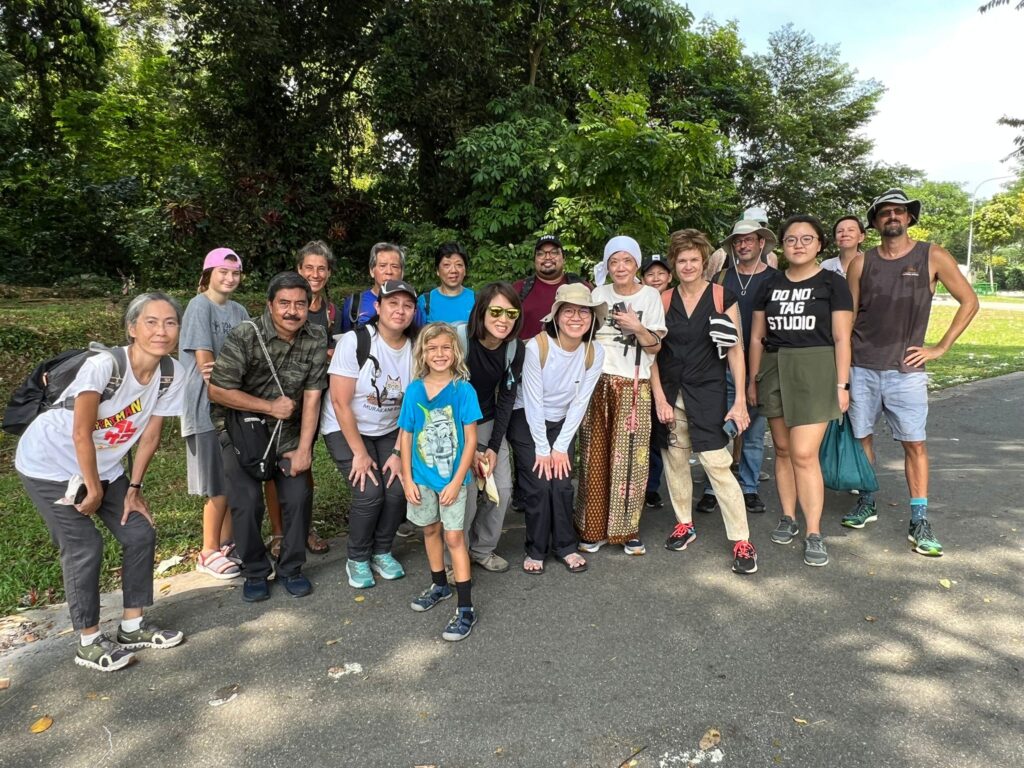
Thanks for coming and being such a great group of participants, especially the boy who kept me occupied while Fabian held court.
A guided walk to the rarely traversed hill 4 saw a turnout of 20 enthusiasts, some repeat customers, but the majority were first timers.
Our passing stop was the tomb of Tan Chor Nam, enroute to Hill 4, where Fabian explained the importance of the man who was the founder member of the Tong Meng Hui, the revolutionary arm of Sun Yat Sen, widely acknowledged as the founder President of the Republic of China.
At Hill 4, we had to abandon visiting the Tan Quee Lan cluster, because the route was cut off by too many fallen branches.
And so we proceeded to the Lim cluster to Chong Pang and his story of escape by sea during WW2, ship sunk, fortunately he was rescued, but unfortunately found himself back on the island, forced to serve in the Overseas Chinese Association, (OCA) which was essentially the Japanese propaganda machinery.
Much vilified by his own, was he like Lim Boon Keng who served as head of OSA, vindicated, after the war was over? Join us at our next guided walk to Hill 4 to find out and also find out what happened to his first family after he took a second wife.
The beautiful tomb of the coloured mosaic chips – “jian nian (剪黏)” – was next. Lovingly cleaned and glued back by a brownie over the last weekend. This is the tomb of the five cats, all decorated in a myriad of scattered colours. For an example of a finely restored mosaic chips, look no further than the roof tops of the Hong San See Temples at Mohamed Sultan Road, which received, a UNESCO award for restoration.
From 5 cats, it was just two stops over to Wong Chin Yoke, who on a covert operation in Indonesia was betrayed and killed by Japanese forces during WWII. His remains returned after the war, and he was given military honours at his funeral. Guarding his grave are two life size Sikh Guards.
From there, we moved to the end of Hill 4, adjoining the big bungalows of Caldecott, and visited with two luminaries from our early past,
At the grave of Cheang Hong Lim (CHL), Fabian pointed out how the tombstone was different from the shoulders, which were deep grey and carved elaborately. That’s because CHL was reburied from his family burial grounds in Queenstown area. Once the richest man on the island, he too, had to move house. His vast fortune was amassed from the misfortunes of addition, and many were coolies who could ill afford a opium habit. Yet he was generous to a fault, any appeal for charity would not be turned down. In the end, the question was asked, was he seeking redemption?
Tan Kim Ching, the eldest son of Tan Tock Seng was the last stop. What greater contribution to the then community of the disfranchised and the poverty stricken, the gift of a pauper’s hospital. A hospital that has grown, through the continued contributions of his descendants from Tan Kim Ching his son to Kim Ching’s grandson Tan Boo Liat et al. On his tombstone, Tan is honoured as a special envoy of the King of Siam. It is through a meeting between him and George Henry Brown, that led a widowed governess into the Siamese court to teach the children of King Mongut, the inspiration for the musical “The King and I ”
The brownies have visited the descendant of Tan’s second family, a wife bestowed on him by the King no less. And at the descendants house, which is a line from the daughter of Tan, we saw the jade beads that sometimes appear on the formal portrait of Tan Kim Ching. Unlike, CHL, Tan’s titles from the Manchu Court of China was of the second order. But Tan lived in an earlier time before Cheang Hong Lim, who paid for the title of the first order.
Reflection:
As we glimpse into the lives of the very wealthy and prominent leaders of the Chinese community of that time, we look at not only how they made their money from plantations of pineapples, rubber, and property, but also how they spent it -some may have been profligate – but there were definitely the ones who used their reputation, influence and wealth, to build a better life for the poor, a better society, and a better country. We visited with two this morning.
Thank you to the 20 people who turned up, engaged with Fabian and Catherine, asked interesting questions, shared their insights, we enjoyed your company. Please visit with us and other brownies when they explore other hills. We are in our 11th year of guiding walks and we have learned much on our journey with our visitors, and so we do what we do best, we tell stories.
100,000 graves, 100,000 stories.

The escape by sea, the irony of being rescued and sent back to the “fortress” island that fell so ignominiously
Considered the foremost authority on Raffles, the National Library Board has acquired the collection of Dr. John Bastin’s more than 5000 materials. 38 of which have been curated for public viewing on the 13th floor.
The exhibits both showcases and makes accessible NLB’s existing Singapore and South East Asia Collection which “form an important nucleus of works on early Singapore. “ The rare materials collection is conventionally the preserve of academics, perhaps perceived as” high brow” located as such on the 13th floor.
But this collection is curated with ordinary Singaporeans in mind with both the personal – a hand written letter by Raffles to his cousin which more than hints at his displeasure with Farquhar – and the quaint – a book on Malay Poisons and Charm Cures – to the spiritual – an almost complete Malay translation of the the Anglican Common Book of Prayer.
But the highlight must surely be the leaflets which were air dropped in the 50s at the height of the communist insurgency in the jungles of Malaya, in an attempt to “persuade” – both by threats and propaganda – insurgents to surrender peacefully. These leaflets dropped by the thousands and commonplace then, have become rare. I have seen them once in a private collection. The NLB rare gallery showcases three pieces.

A 1955 Chinese New Year “special” designed to tugged at the heartstrings and homesickness at a time of celebration (photo Catherine Lim)
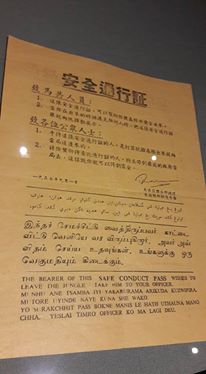
Leaflets in 4 languages which provided “safe conduct” upon surrender. An indication that the communist insurgency had support from all ethnic groups ? (photo Catherine Lim)
Other Highlights:
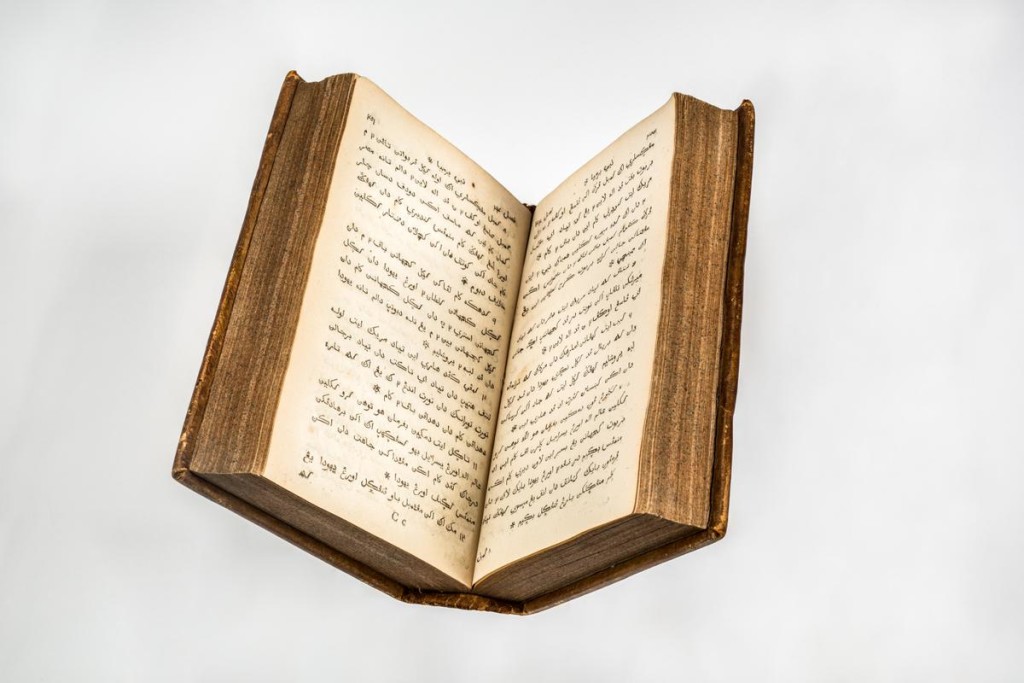
Treasures of the Rare Gallery – Al-Qawl al-atiq iaitu segala surat Perjanjian Lama ,Old Testament Bible in Malay (photo NLB)
Exhibits on Java, Sawarak , Sumatra written by the “colonial masters ” stationed here, a reminder that Singapore was part of the “Straits Settlements”

Thirty-two such silhouettes of different types of Malaysian people of the 20th C from “Shadows in The Malay Peninsular” by W.G. Stirling, London 1910 (photo Catherine Lim)
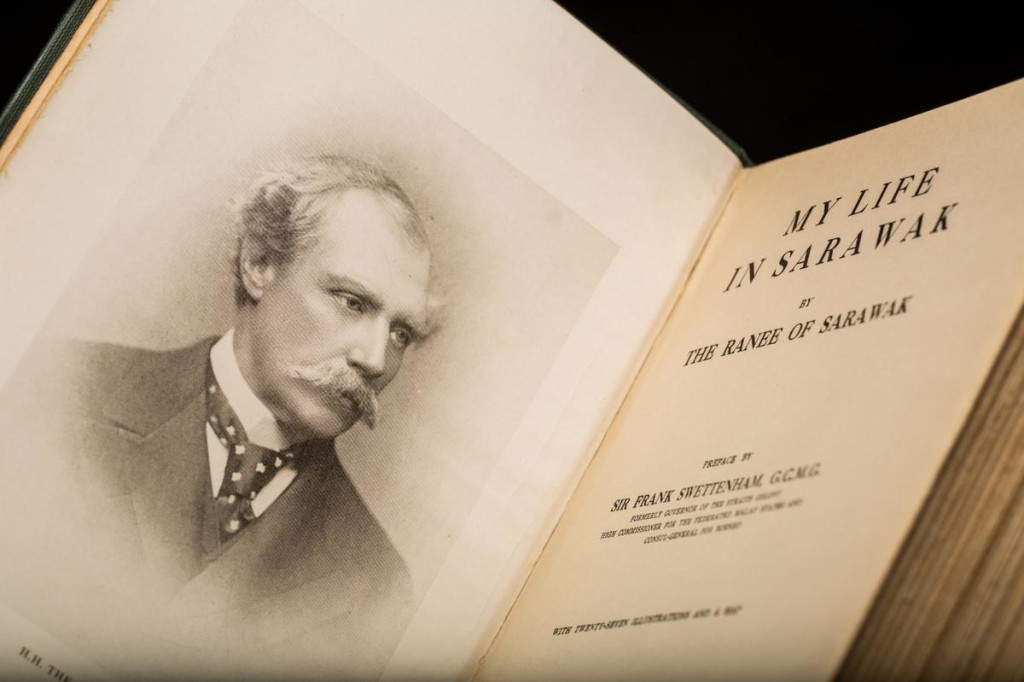
Written by Margaret Brooke “Ranee of Sarawak (1849-1936) and consort of the Sir Charles Brook. The copy on display establishes the social connection between the Brookes and Swettenham (Governor of the Straits Settlements). Swettenham refers fo Ranee as “Margaret darling” in 2 handwritten letters (photo NLB)
Expressing Raffles passion for the biodiversity of the region.
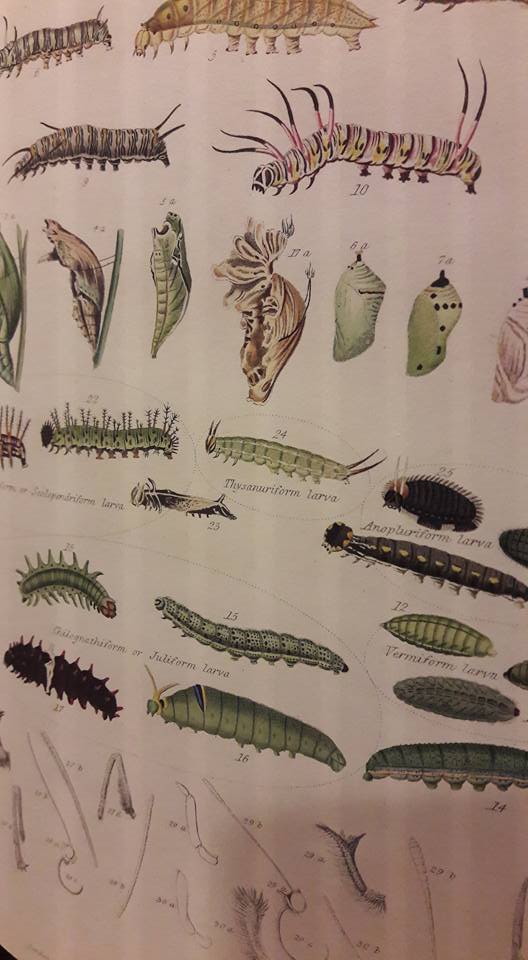
From “Descriptive catalogue of the Lepidopterous insectsnby Thomas Horsefield London, 1828/9 (photo Catherine Lim)
And lets not forget, exhibits which clearly reminds us of the collector’s primary interest, Raffles himself.
Of interest for further study an exhibit of : a bill introduced to the British Parliament on 18 June 1824 to ratify the Anglo-Ducth Treaty of 1824 which concluded longstanding territorial and commercial disputes between Britain and Netherlands. A valuable source of information of how the two rival colonial and maritime powers decided on how to carve out their colonies in the region
As a collection, its importance is to give visitors a flavour of our past, providing historical context in print that covers different facets of political, social and community engagement at a personal level.
If there is anything more the NLB can do to get more Singaporeans to “embrace” the rare collections , is perhaps for this collection to serve as an inspiration for other activities which could revolve round art and story imagining of a past which helped defined who we are today.
Guided tours of this collection will be held monthly between July and December. Do check listings here
———————————————————————————
Catherine Lim is co-editor bukitbrown.com
“In the end we will conserve only what we love; we will love
only what we understand; and we will understand only
what we are taught.” (Baba Dioum, 1968.)
A quote by the Guest of Honour Senior Minister of State , Desmond Lee (National Development and Home Affairs) in his address , captured aptly the journey of the Bukit Brown community leading to another milestone in what has been dubbed ” a movement” with the launch on 16 April, 2016 of the book WWII@Bukit Brown – a collection of essays, poems and stories from the community of Brownies and descendants.
In his speech, Minister Lee recounted his first guided walk at Bukit Brown Cemetery with his constituents :
“During the visit three years ago, we learnt about the history and heritage of our pioneers from the stories shared by the Brownies.
Over the years, we have all been very impressed by the passion demonstrated by the Brownies, as they have contributed so much of their personal time, personal energy and expertise to research, document and share the history of Bukit Brown with the rest of us in Singapore.
They are an example of what the community can do to connect with, and to celebrate our history. But if we reflect on it, although Bukit Brown is a cemetery, their work is so much more than just about the past. It is also very much about our future.
The research that the Brownies did led descendants to approach them for help to identify their ancestors’ resting places, and from there, an opportunity to open up conversations about their personal and family stories, which they then shared for the benefit of posterity.
I understand that some of the descendants are here. Some of your stories and stories of your forefathers have made their way into this book. This book is a testament to the hard work and effort the Brownies had invested over the years.”
We were also honoured to have descendants among the contributors to the book grace the launch and they included the descendants of Tay Koh Yat, Tan Ean Kiam, Cho Kim Leong and Tan Kim Cheng.

Tan Keng Leck, grandson of Tan Ean Kiam with Minister Desmond Lee. The Tan Ean Kiam foundation is also one of the sponsors for the book (photo Lawrence Chong)
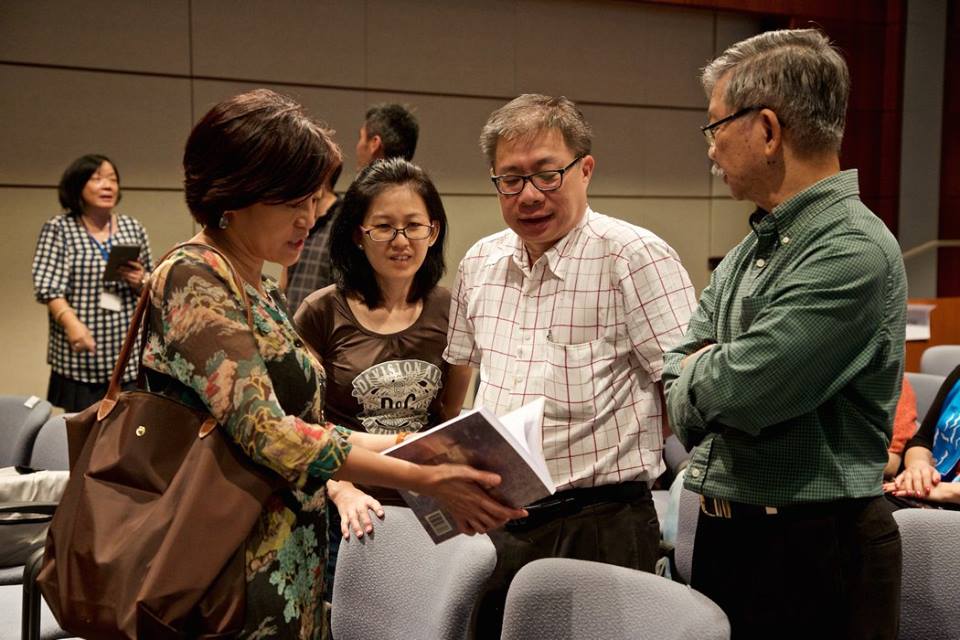
Claire Leow (Editor) with the youngest and oldest grandsons of Tay Koh Yat showing them the chapter on their grandfather.(photo Carolyn Lim)

Jenny Soh in maroon top is the niece who was saved by her Aunt Soh Koon Eng who died during a bombing raid at their home in Geylang. (photo Carolyn Lim)

Among the guests who attended, the Australian High Commissioner Philip Green and his partner Susan who have been guided by Brownies (photo Lawrence Chong)

The Editorial Team (minus 2, Yik Han and Raymond Goh) with Minister Desmond Lee. L-R Catherine, Claire, Simone, Peter, Minister Lee, Bianca, Fabian, Chyen Yee, Charles (photo Lawrence Chong)
It was an occasion for connections and re-connections.

SHS President Chua Ai Lin with Dr. Tan Cheng Bock an old family friend and Alex Tan Tiong Hee who contributed a chapter in the book. (photo Lawrence Chong)
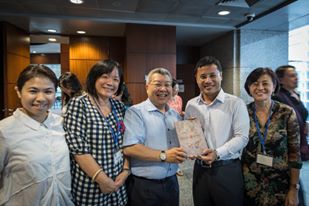
SHS President Chua Ai Lin, Catherine (editor) Kevin Tan (former SHS President and Editor of ” Spaces of the Dead- A Case from the Living 2011″) Minister Lee and Claire (editor) – Overheard, Kevin recounting to Minister it took 11 years to raise funds for the book Spaces of the Dead also published by Ethos (photo Lawrence Chong)
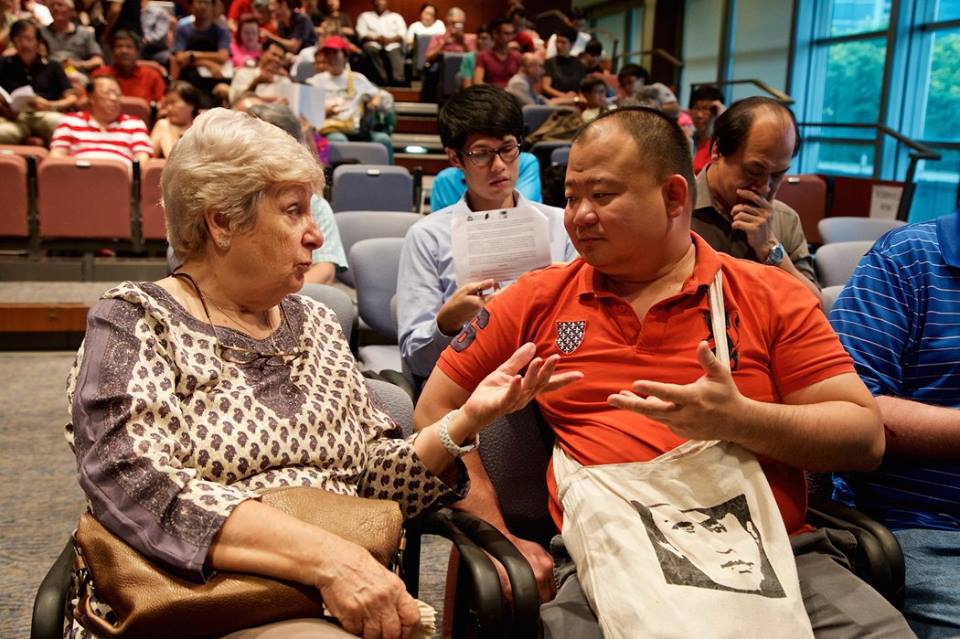
Descendant of Dr Lee Choo Neo – Singapore’s first female doctor – with CW Chan who contributed a profile piece of Lee Choon Seng – “oh to be a fly on the wall of this conversation” (photo Carolyn Lim)
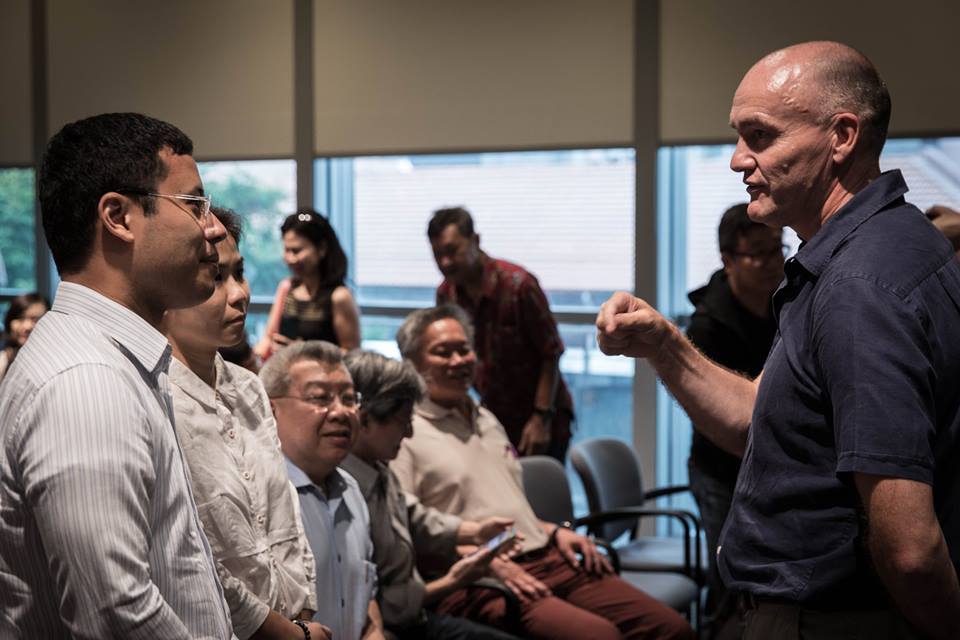
Minister Lee meeting Jon Cooper who contributed a chapter to the book and recently launched his own book Tigers in the Park on the WW II archeological digs he conducted over a span of 6 years as part of the Adam Park Project
Jon, captivated the audience at the launch with his stories of the descendants and survivors of POW camps he had met in the course of his research (photos of Jon’s presentation by Lawrence Chong)
And finally a pictorial thanks to our sponsors in no particular order :
And as previously mentioned Tan Ean Kiam Foundation is one of the sponsors.
You can support funds for the book by purchasing a copy or more here
If you would like to bulk purchase books to donate to community organisations, drop us an email a.t.bukitbrown@gmail.com
And here’s a reminder of “who” this is all about:
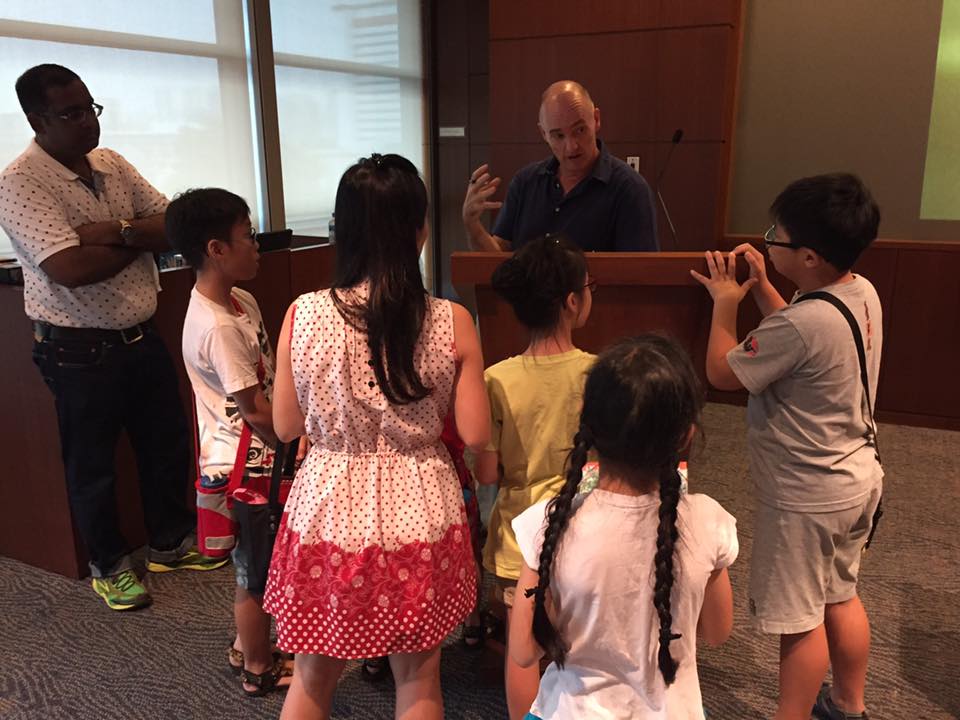
“In the end we will conserve only what we love; we will love only what we understand; and we will understand only what we are taught.” (Baba Dioum, 1968.) Photo Simone Lee
Acknowledgments:
To everyone who came, out heartfelt gratitude. To our official photographers, Lawrence Chong and Carolyn, thank you.
Look out for more stories about the launch and updates about the book in the blog under History : Books
Co Publishers:
Ethos Books and Singapore Heritage Society
Update: Snr Minister of State Desmond Lee (MND, MHA) will be the guest of honour and present books in appreciation to contributors after his address.
****Please note change in programme and we appreciate punctuality in attendance. Audience to be seated in Auditorium by 2.55pm.
Dress code: Casual
Saturday 9 April 2.30pm – 5.30 pm @ The URA Centre, 5th Floor Auditorium. 45 Maxwell Road, 069118.
Please register here: http://peatix.com/event/159461
Programme:
2.30pm : Registration
3pm to 4 pm: Launch Programme:
Welcome Address: Editors
Presentation by Jon Cooper, War Archeologist : Stories Behind Battle at Cemetery Hill and The Adam Park Project
Slide Presentation of WWII @ Bukit Brown
Minister Desmond Lee Address, followed by Presentation of Book to Contributors and Sponsors
4pm-4.30 pm: Refreshments
4.35 pm – 5.45 pm Presentations on Panel Discussion
“The Role of Community Engagement — Shared Experiences”
Dr Chua Ai Lin, president Singapore Heritage Society : The Multiple Spaces of Bukit Brown (based on a paper with Dr Terence Chong)
Kok Heng Leun : “Socially-Engaged Art: Bukit Brown” – Key Note address by the Artistic Director of Drama Box and recently-appointed Nominated Member of Parliament (NMP). At the 2015 Singapore International Arts Festival, Heng Leun conceptualised an ambitious triple-bill production on Bukit Brown and the contestation over land use entitled ‘It Won’t Be Too Long’. In particular, the part called ‘The Lesson’ was a forum theatre piece around the construction of a fictional MRT station, and was performed in Drama Box’s inflatable Goli Theatre to audiences in Toa Payoh Central. ‘It Won’t Be Too Long’ received rave reviews and was one of ST Life’s Best Theatre productions of the year.
Following Heng Leun’s presentation, Chua Ai Lin and Jon Cooper will each respond briefly before the discussion is opened to the floor.”
Moderator: Assoc Prof Darren Koh, Head -Master of Taxation Programme, School of Law, UniSIM. Special interests, Chinese cemetery practices and culture
5.45 pm: Ends
****************************************************************
The Singapore Heritage Society (SHS) and Ethos Books with All Things Bukit Brown (atBB) will launch WWII @ Bukit Brown on Saturday April 9, 2016 – a collection of stories, essays and poems which looks at the Japanese Occupation in the Second World War (1942-1945) and the impact on Singapore from the perspective of those interred at Bukit Brown Cemetery.
The highlight of the book is stories shared by descendants from family oral archives and albums of their ancestors who survived or perished in the darkest chapters of Singapore’s history.
Bukit Brown remains the largest cemetery in Singapore for the war dead in situ, and buried with them are many untold stories of bravery, resilience, tragedy, survival and amid the darkness, hope. The book offers new material and insights into the human tragedy of war as an act of commemoration, adding another layer to the already vast literature on WWII in Singapore.
“The stories have taken us to the Endau Settlement in Johor, to Taiping (Malaysia) and to the battlefields of Europe in ways so unexpected they took our breath away,” said Claire Leow and Catherine Lim, the co editors of the book. “It is a slow and at times painful unraveling of family history, lost in memory but for the persistence of descendants. It has taken seven decades for some of these fragments to be pulled together, and we see this not as a one-off book but a first step in the difficult journey of “re-discovery” and “re-membering”. The narratives also re-affirm to us Singapore’s place in regional and global historical narratives. We hope it serves as a curtain raiser to 2017, the 75th Anniversary of the Fall of Singapore. ”
The stories are nested around essays – which provide context and background – written by the community of volunteers, who have come to be known as brownies under the banner of All Things Bukit Brown. They are neither historians nor academics but the editorial team conduct regular guided walks on site which in themselves are learning journeys as they expand on their body of knowledge from engaging with descendants and a myriad web of networks including academics and historians.
“Bukit Brown has unexpectedly turned out to be a touchstone about the loss of heritage – tangible and intangible – in a Singapore eager to modernise and develop,” Chua Ai Lin, President of SHS. “The book is an important evolution of the civil society movement to uphold Bukit Brown as a site of national significance, and illuminates one of its more fragile narrative threads. It brings together at once the strategic and personal importance of the site, and SHS is pleased to once again support All Things Bukit Brown, which has evolved from a volunteer base guiding weekly public tours and regular customised tours, to hosting exhibitions and participating in arts programmes to reach as broad a support base as possible to save what is left of the site.”
The book has been made possible with a grant from National Heritage Board and the help of generous contributions to the Singapore Heritage Society from its members and other well wishers.
The Editorial Team behind WWII@Bukit Brown, acknowledges in gratitude the support and encouragement of a community too many to name, and in recognition of this support have gifted the copyright for the book to the Singapore Heritage Society for the work they have done in heritage education and advocacy and Ethos Books for their support of home grown writing.
Singapore Heritage Society (SHS) was founded in 1987 and is a non-profit, non-governmental organisation and registered charity with Institution of Public Character (IPC) status. It Singapore’s leading organization dedicated to research, education and advocacy on Singapore’s history, heritage and identity. SHS is behind many significant publications on Singapore history including Syonan: Singapore under the Japanese, 1942-1945 (1992); Memories and the National Library: Between Forgetting and Remembering (2000); Spaces of the Dead: A Case from the Living (2011).
The Ethos Books imprint was founded in 1997 by Pagesetters Services Pte Ltd. The imprint focuses on publishing works by Singapore writers. The main genres are poetry, literary fiction, creative non-fiction, memoirs, and Heritage books. It has worked with the SHS before in jointly publishing “Spaces of the Dead. A Case from the Living”. Other heritage books published include “Faith in Architecture”; “Teo Eng Seng: Art and Thoughts”; “Memoirs of a Migrant”; and “The Politics of Defeat”.
All Things Bukit Brown (atBB) is the banner for a community of volunteers who conduct independent research and guided walks on Bukit Brown Cemetery. Since they came together as a community in 2012, they have collectively organised public talks with partners such as the NUS Museum and Chui Huay Lim Club, two exhibitions and successfully nominated Bukit Brown Cemetery as the first site in Singapore to be placed on the World Monuments Fund Watch list 2014-2016. Claire Leow and Catherine Lim, co-founders of the blog, bukitbrown.com, are the editors for the book, backed by a volunteer editorial team from within the community.
We are grateful to the Urban Redevelopment Authority URA for sponsorship of venue for the launch.
Information on our regular free guided weekend walks and public holidays under All Things Bukit Brown and registration is recommended is now available on Peatix. Please click on this link to register.
The guided walks usually begin at 9am and end at 12 pm, although there are sometimes walks in the afternoons from 4pm to 6.30pm and night walks. They are organised based on the availability of volunteers with the exception of the first weekend of every month, where there are guided walks available on a Saturday morning and Sunday afternoon, should you want to plan ahead.
The Battlefield Guided Walk conducted by Jon Cooper is available every last Sunday of the month.
Please take note of the new access routes and meeting points and check where the meeting point for your guided walks is on the event page.
If you are interested in organising a private guided walk for a minimum of 15 pax, please email a.t.buktbrown@gmail.com. As we all volunteers, weekends are easier to arrange then weekdays, weekdays means volunteers will need to take time of from work.
Useful information on guided walks and Directions to Bukit Brown
Our guided walks about two and half hours to three hours duration
Brownie Code: We guide rain or shine.
Please take note:
1. We will be walking through the undergrowth so dress appropriately, especially your footwear.
2. Wear light breathable clothing. Long pants and long sleeves if you are prone to insect bites or sunburn. Bring sunblock and natural insect repellent.
3. Wear comfortable non-slip shoes as safety is important. Walking sticks are recommended.
4. Do read up on Bukit Brown before going so you have a better understanding of the place
5. Do bring water, light snacks, poncho/umbrella, sunhat and waterproof your electronics.
6. Please go to the toilet before coming. There are NO facilities anywhere there or nearby.
=======================================
How to get there by MRT / Bus:
Bus services available: 52, 74, 93, 157, 165, 852, 855.
From North: Go to Marymount MRT and walk to bus-stop #53019 along Upper Thomson Road. Take Buses 52, 74, 165, 852, 855
Alight 6 stops later at bus-stop, #41149, opposite Singapore Island Country Club (SICC), Adam Road. Walk towards Sime Road in the direction of Kheam Hock Road until you see Lorong Halwa.
From South: Go to Farrer Road MRT and walk to bus-stop #11111 at Farrer Road, in front of Blocks 2 & 3. Take Buses 93, 165, 852, 855. Alight 5 stops later at bus-stop, #41141, just before Singapore Island Country Club (SICC), Adam Road. Cross the bridge, walk towards Sime Road, follow the road until you see Lorong Halwa.
By car:
Turn in from Lornie Road, to Sime Road. Then, turn left into Lorong Halwa, where parking is limited. Try to use public transport to get there.
In the event that the old main Gate has been closed, kindly wait / meet at the new connecting road which is after the old road.
10 am – 12.30pm with Keng Kiat covering Hill 3. Please register on peatix which has details here
4pm – 7 pm with Darren Koh : An Introduction to Bukit Brown. Please register here
Disclaimer: By agreeing to take this walking tour of Bukit Brown Cemetery, I understand and accept that I must be physically fit and able to do so.To the extent permissible by law, I agree to assume any and all risk of injury or bodily harm to myself and persons in my care (including child or ward)
“Remembrance” : NDP 2015@Bukit Brown
Time: Between 8am and 7.30pm
Meeting Point: Various.
Remembrance Ceremony : 6.30 pm to 7.30pm @Block 1, as you enter on your right of new access road, you can’t miss us. We have flags!
This NDP 2015 @Bukit Brown, we remember and pay tribute to the space that embraces the touch stones of our memory, 100,000 tombstones. 100,000 lives; from Coolies to Community leaders, Paupers to Poets, Social Reformers to Socialites with a cause.
Bukit Brown is a microcosm of life at the turn of the 20 century – a collective narrative of hardship, struggle and triumph against the odds. So come celebrate Remembrance and lest we forget, we will remember the victims of war and our war heroes in this, the 70th anniversary of Liberation from Occupation with 2 walks from outside Bukit Brown leading to Bukit Brown. There will also be 2 guided walks within Bukit Brown starting in the late afternoon.
There have been drastic physical changes to the landscape since we started commemorating our Nations Deceased Pioneers (NDP) @ Bukit Brown in 2012. We lost the roundabout, then the ‘ole raintree and by 9th August 2015, the old road to Bukit Brown will be closed and a new road a few meters away is slated to open. But we endure and we will remember.
So join us for a simple commemoration, simple food, but rich stories. Look out for registration details for 3 walks on peatix which will be forthcoming at the end of this week 25/26 July, 2015. But available now for registration is:
1) NDP Guided Walk : Former Rail Corridor to Bukit Brown
Please register here
Facebook page here
Starting 8am – eta @Bukit Brown 4pm Meeting point is Kranji MRT station
“Join us as we start walking from Kranji MRT, down the former rail corridor, past Rail Mall, along Rifle Range Road, into MacRitchie Reservoir, and finally into Bukit Brown.
There will be a toilet break at Ten Mile Junction (approx 7km Walk)
There will be a lunch break at Rail Mall (approx 10Km Walk)
There will be activities planned in Bukit Brown as we celebrate National Day in a unique way.
As the entire walking distance is about 20km, participants are advised to:
– wear comfortable clothes, and walking shoes
– bring a cap / hat, in case of sun
– bring an umbrella / raincoat, in case of rain
– bring insect repellent / spray, in case of bites
– snacks, in case you go hungry …
– WATER WATER WATER
Looking forward to seeing you all on National Day!” From Keng Kiat and Beng Tang, your volunteer guides on this long walk.
================================================
2) NDP Guided Walk : Heritage Walk: From Singapore Botanic Gardens to Bukit Brown Cemetery
Join Simone and Bianca on a walk through the heritage lane, starting from the Botanic Gardens to Bukit Brown Cemetery. The Brownie ladies will share stories of WW2 heroes and prominent personalities at heritage landmarks, including the Jacob Ballas garden, the old Raffles College and the old Command House. The trail continues into Bukit Brown cemetery while we explore remnants and stories of the ‘kampung’ life that was once there
—————————————————————————
This guided walk starts at 3.30pm at Botanic Gardens MRT and we will end the walk near the entrance of Bukit Brown Cemetery, in time for the Remembrance Ceremony at 6.30pm. http://bukitbrown.com/main/?p=10040
Meeting Point: Botanic Gardens MRT Exit at ground level (near Cluny Court). We will be holding a sign to identify ourselves.
————————————————————————-
We’ll be walking on paved roads as well as trekking through the jungle so make sure you wear proper outfit for a light jungle trek. There are no bathrooms along the way and no places to buy water, so make sure you bring some snacks and drinks along and visit the bathroom before we start. And apply the mosquito repellent!
Sign up on Peatix:
3) “Founding Fathers” Guided Walk with Fabian Tee @ 4pm
Join Fabian as he shares stories on the lives and times of :Founding Fathers” of revolution and reform, in honour and humility. and #lestweforget those who perished in WW2.
Please register on peatix here
4) Mandarin Guided Walk with Yik Han @ 4pm
由Yik Han负责的华语导览将介绍几位安葬在武吉布朗坟场,来
集合地点:坟场正门(即Lorong Halwa入口处)
==========================
报名:
请在我们的Facebook活动页面按‘参加’/
—————————————————————————
3) and 4) guided walks start at 4.00pm and ends at 6.30 pm at Block 1.
Meeting Point: Bukit Brown entrance at new access road parallel to former entrance at Lorong Halwa
All participants to NDP 2015@ Bukit Brown will receive a World Monument Fund watch day bag while stocks last, and light snacks and water will be provided at the Remembrance ceremony.Watch this space for details of the other walks! Please register when its up, to help us prepare enough food and drink and minimise wastage. Our pioneers do would not approve of wastage!
The Way We Were:
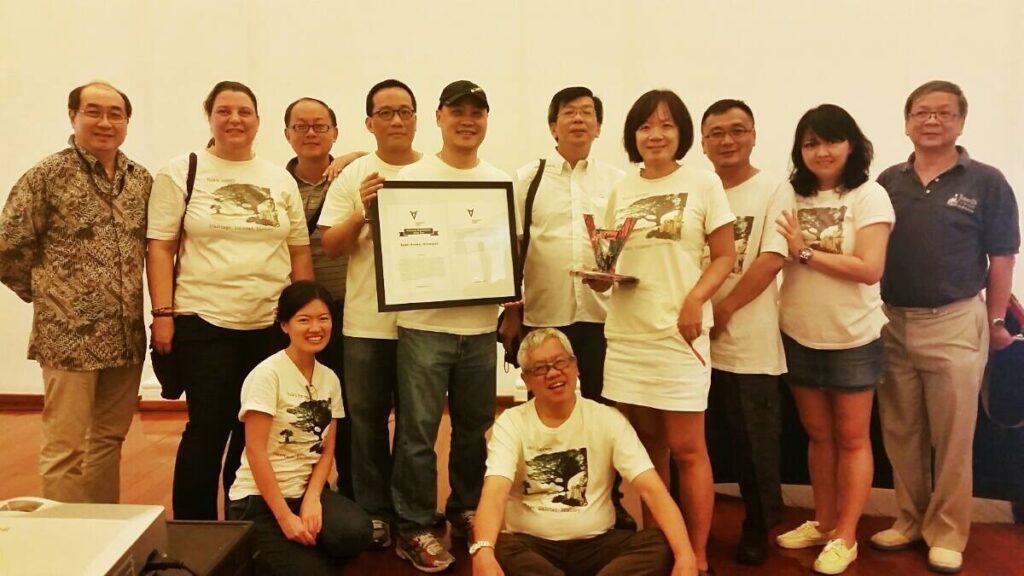
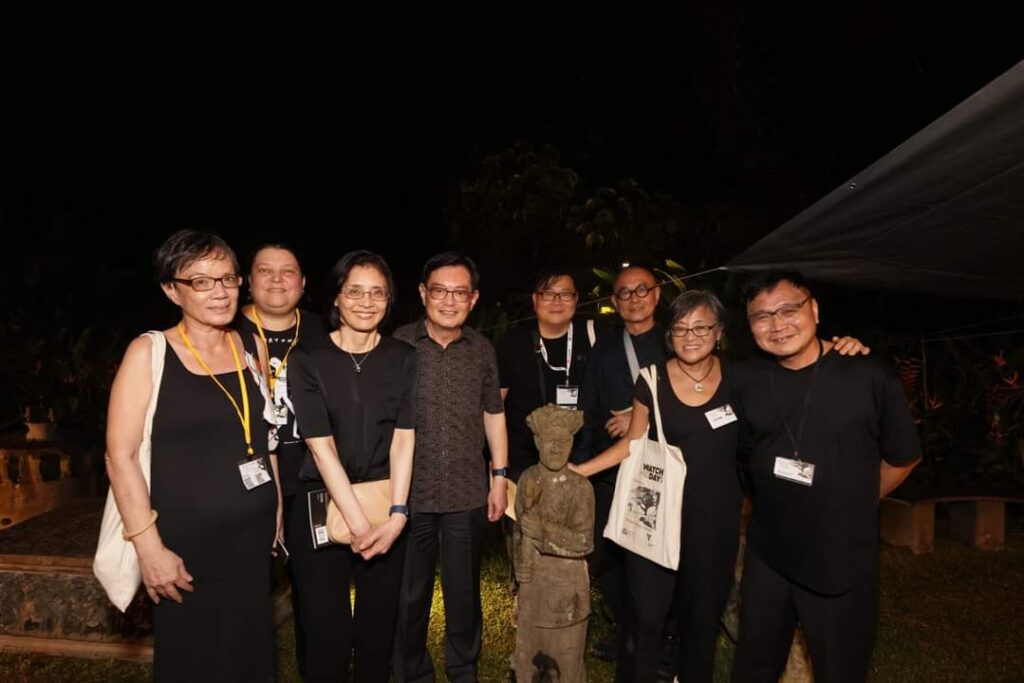
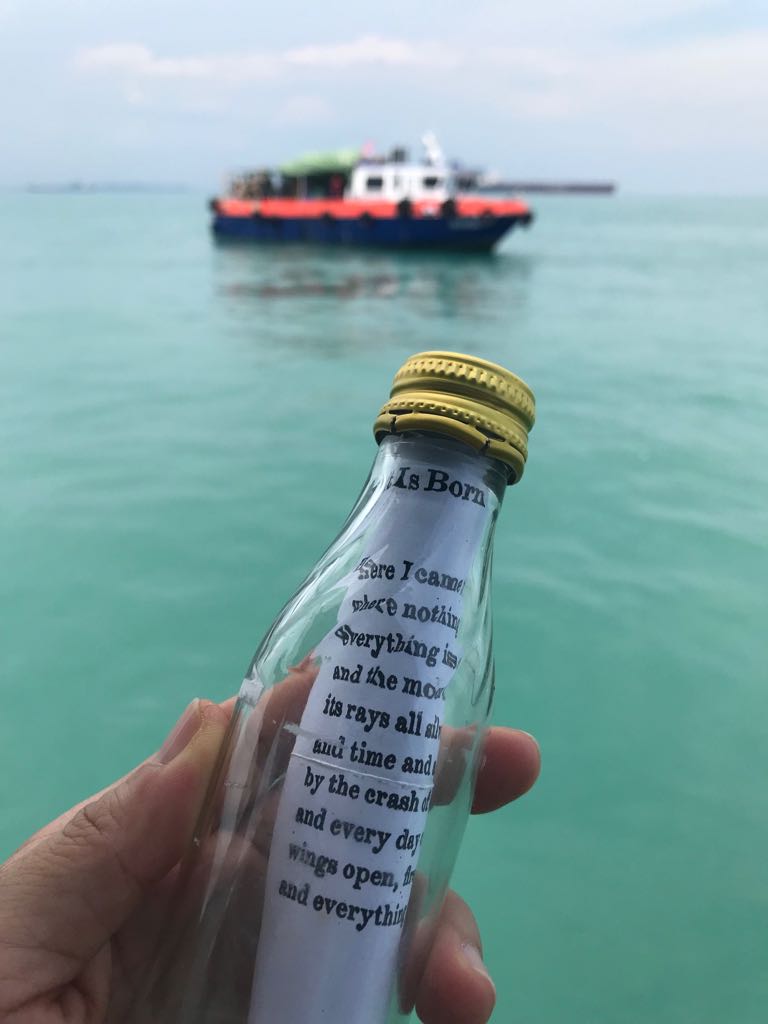

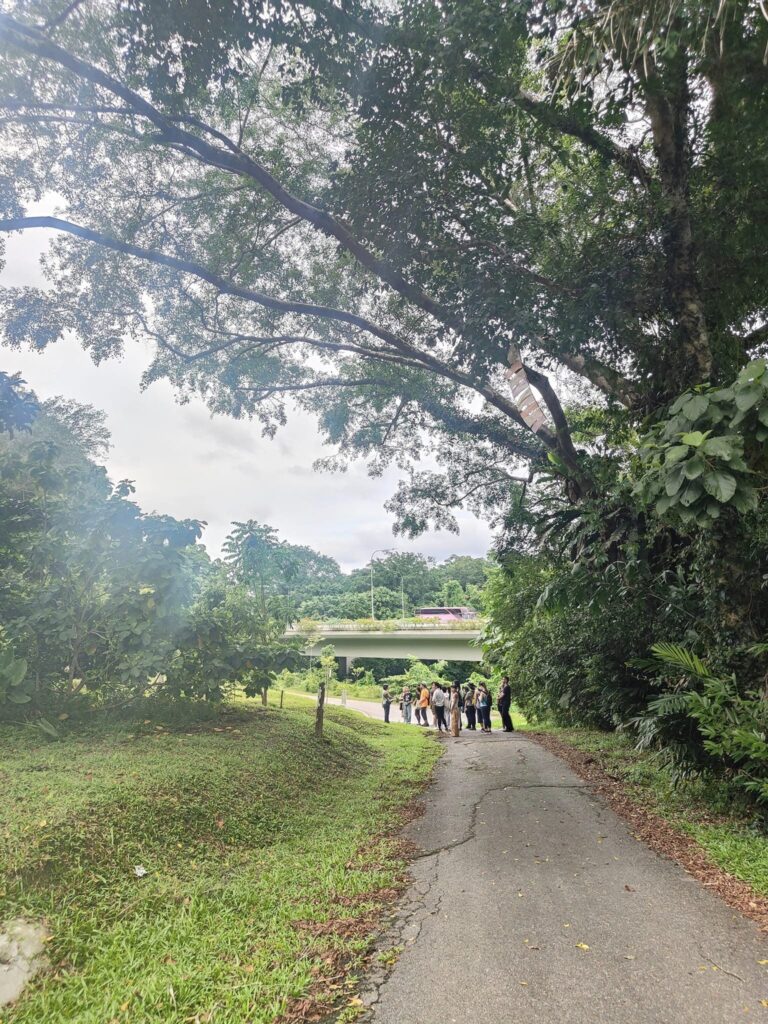


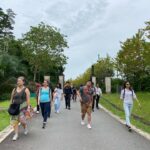
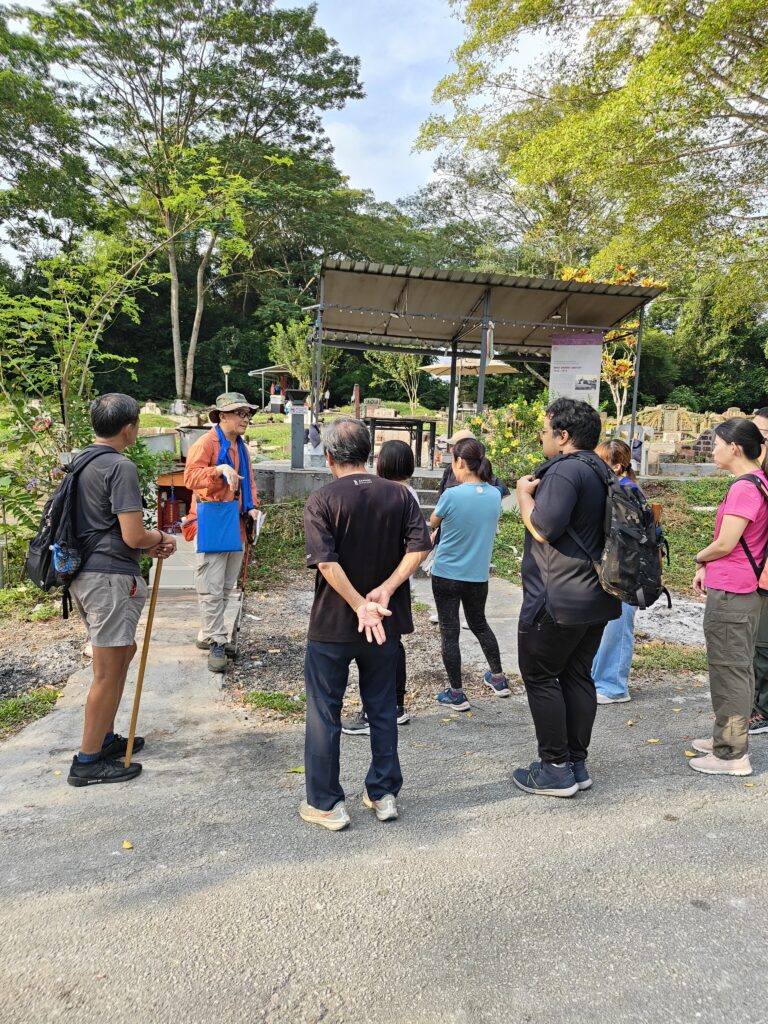

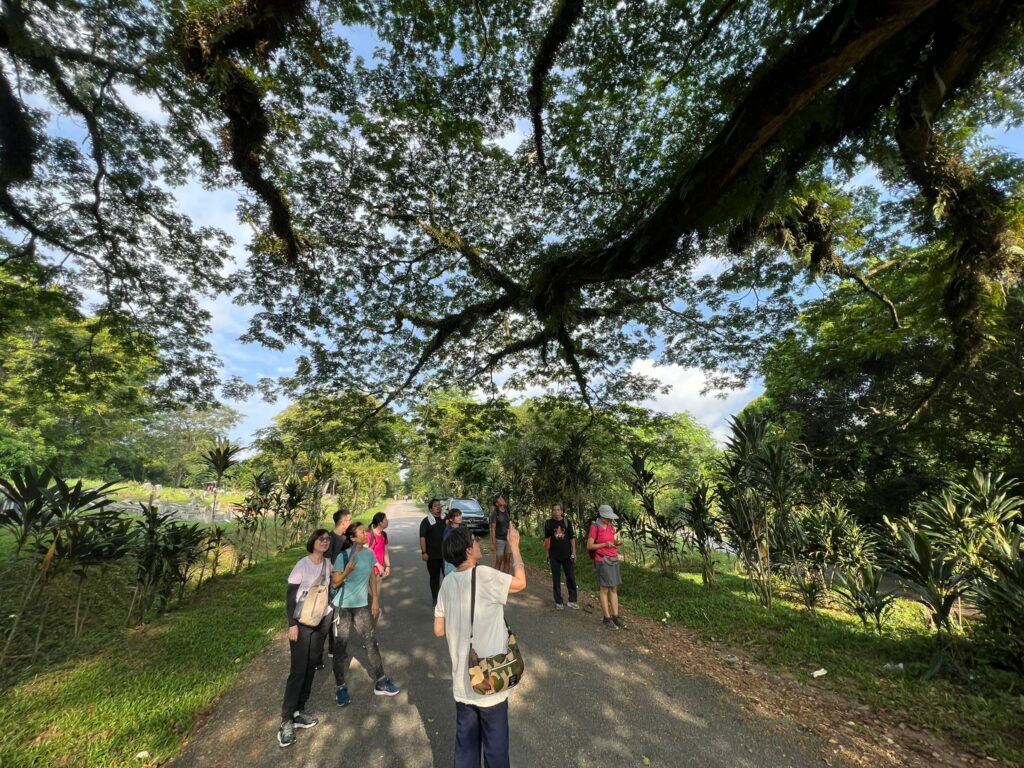

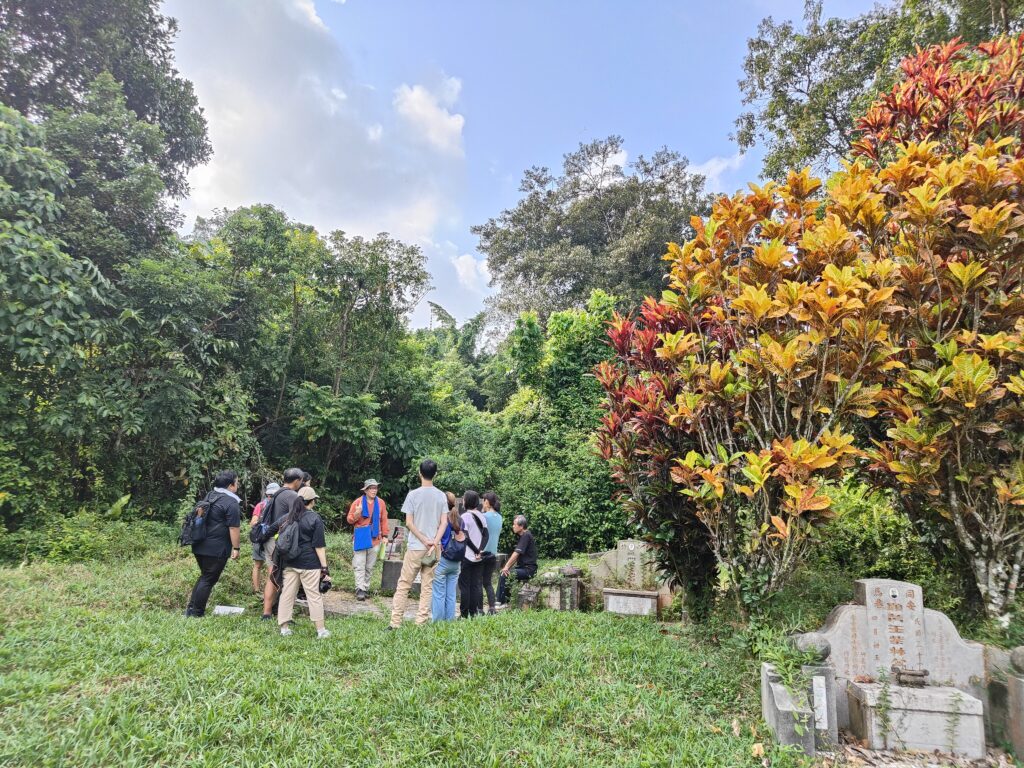
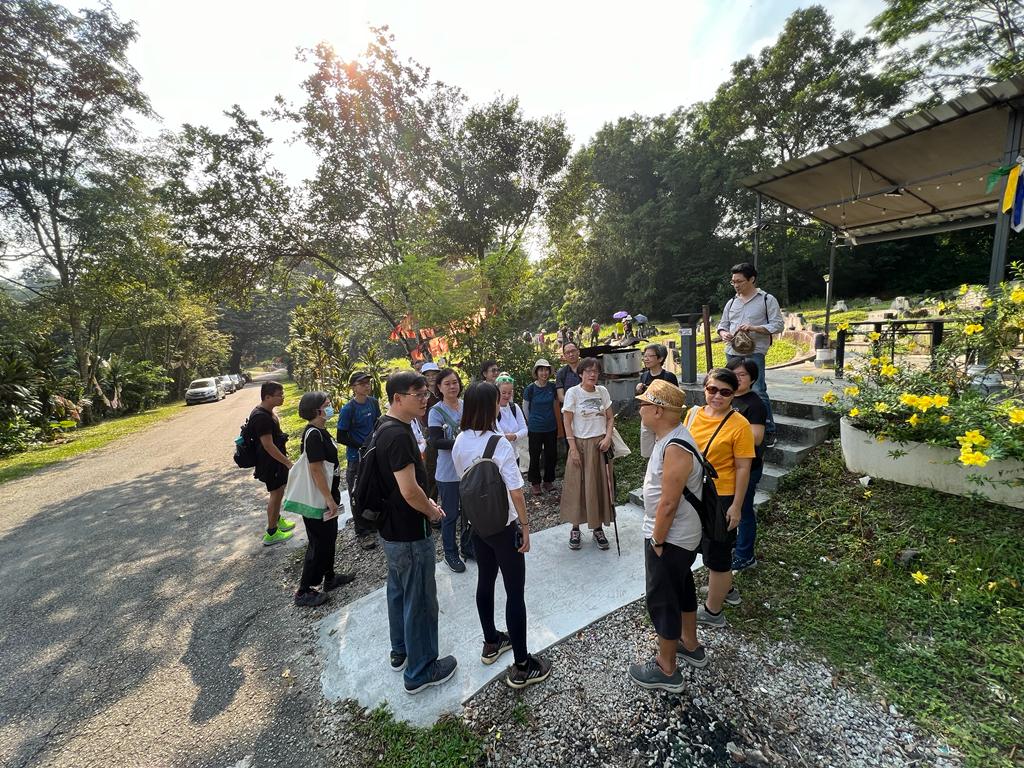

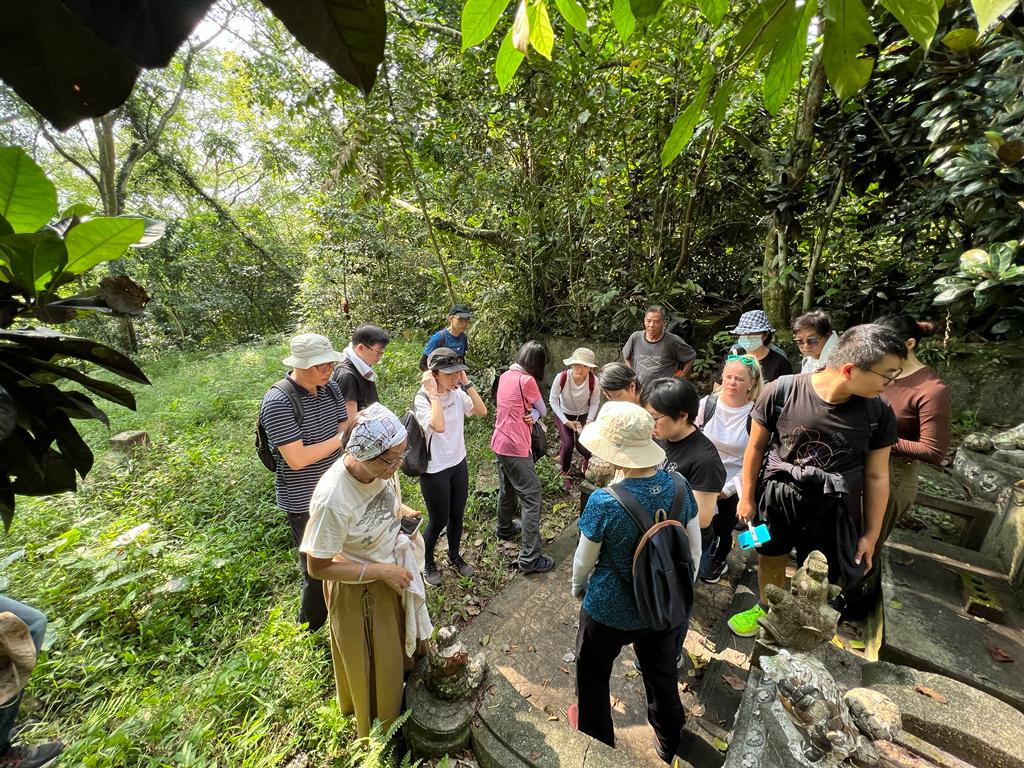
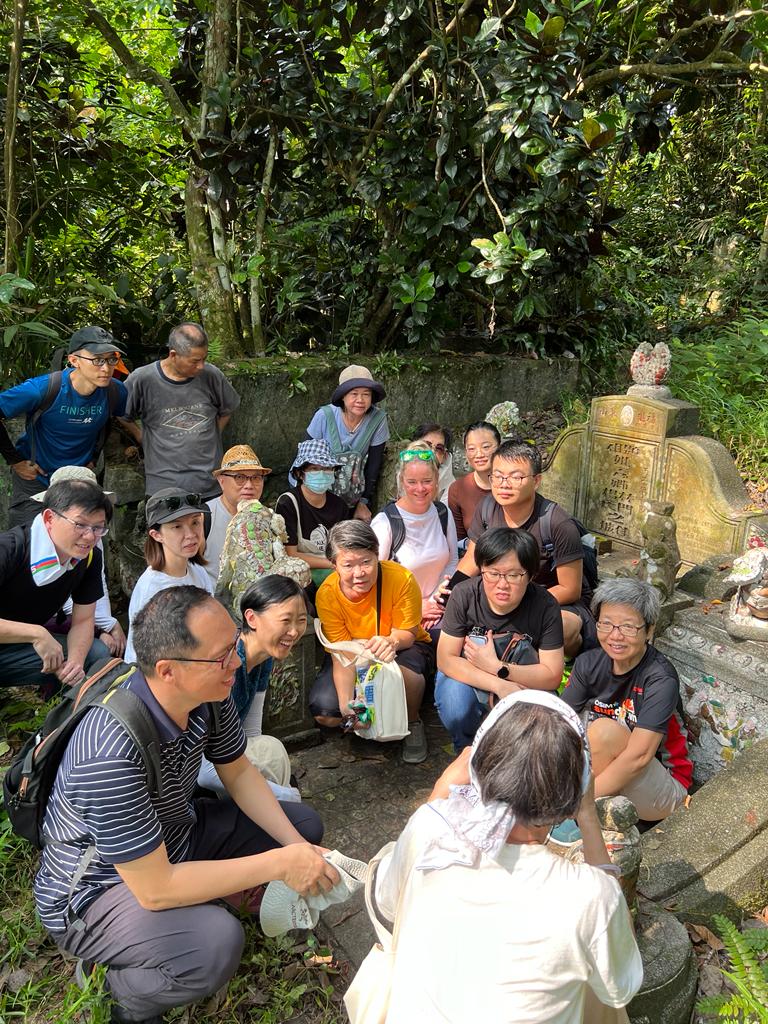
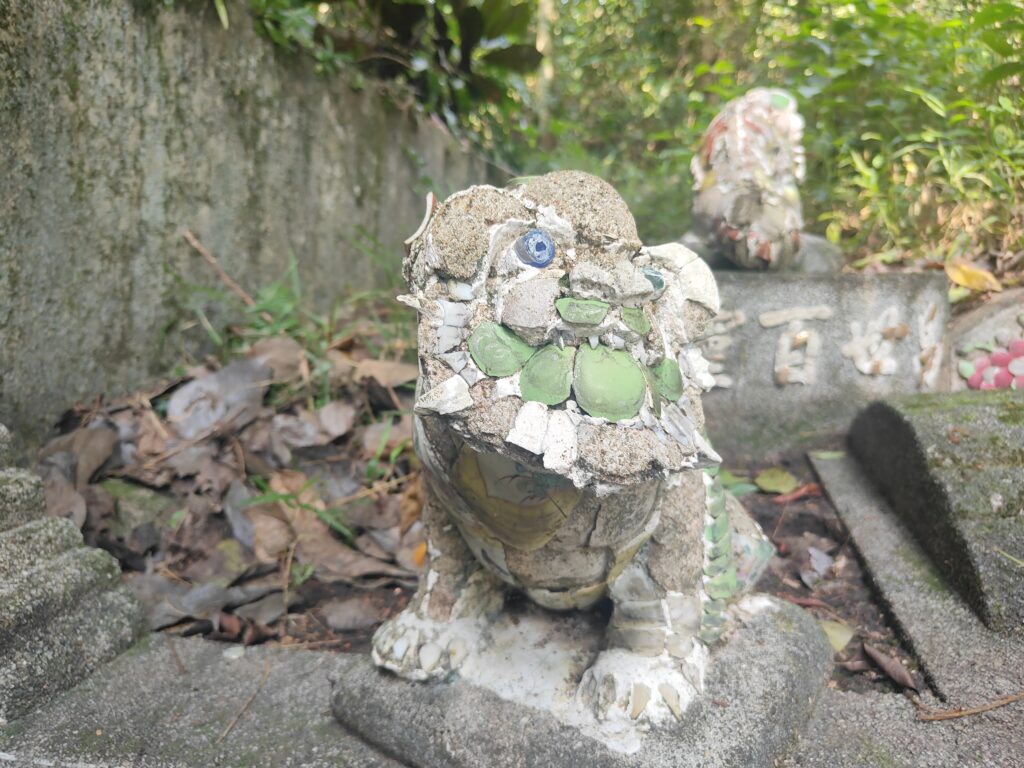
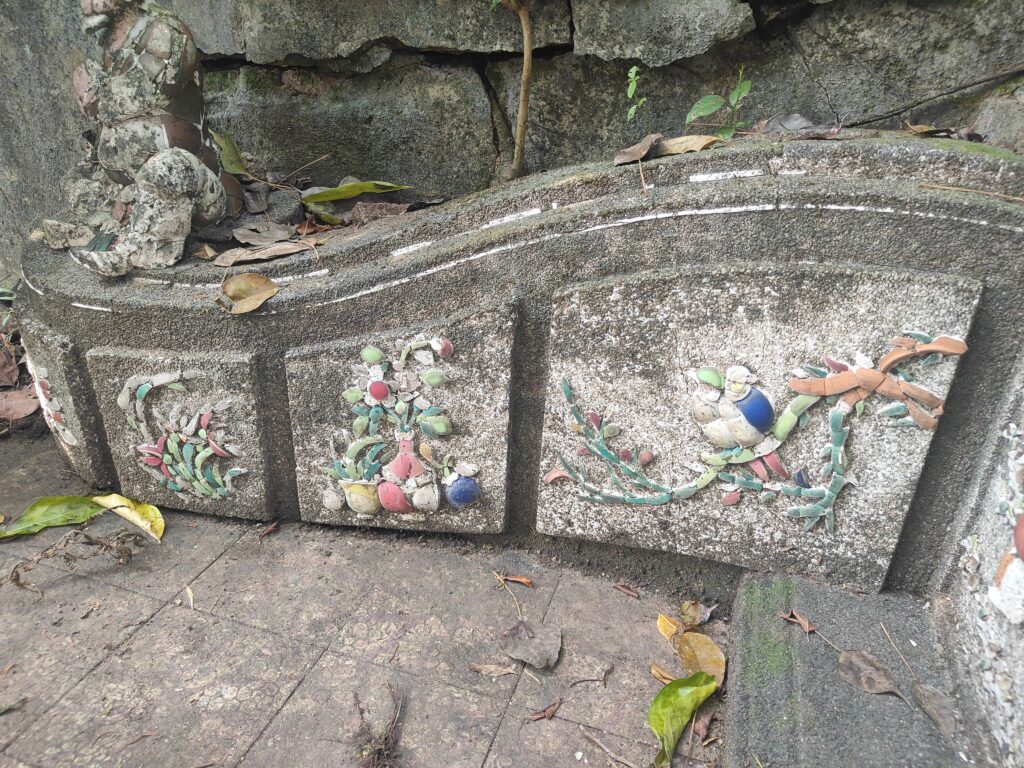
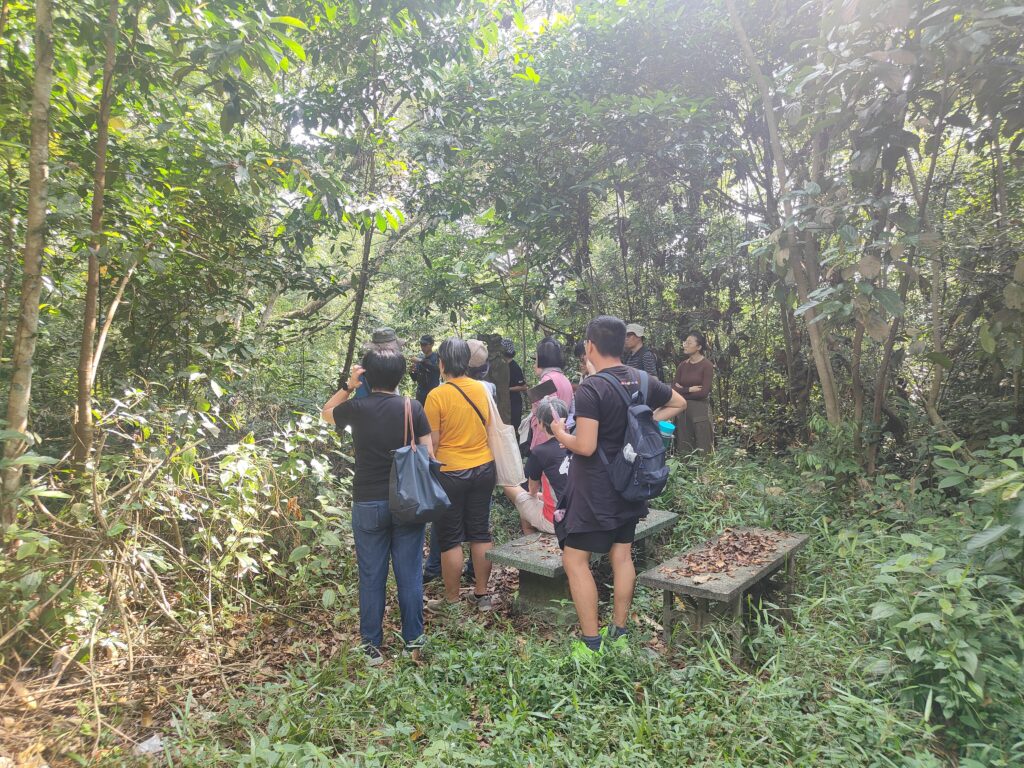
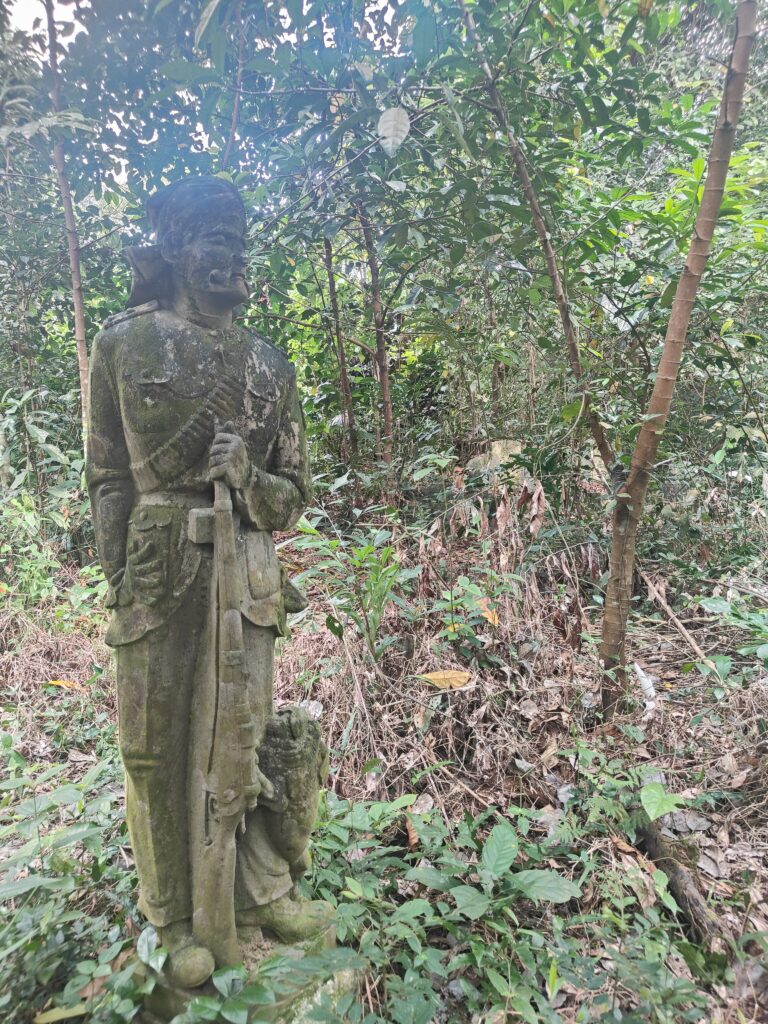

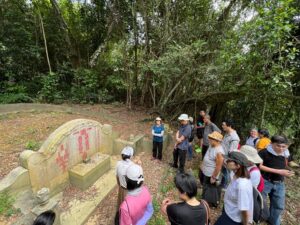
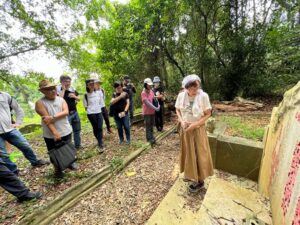
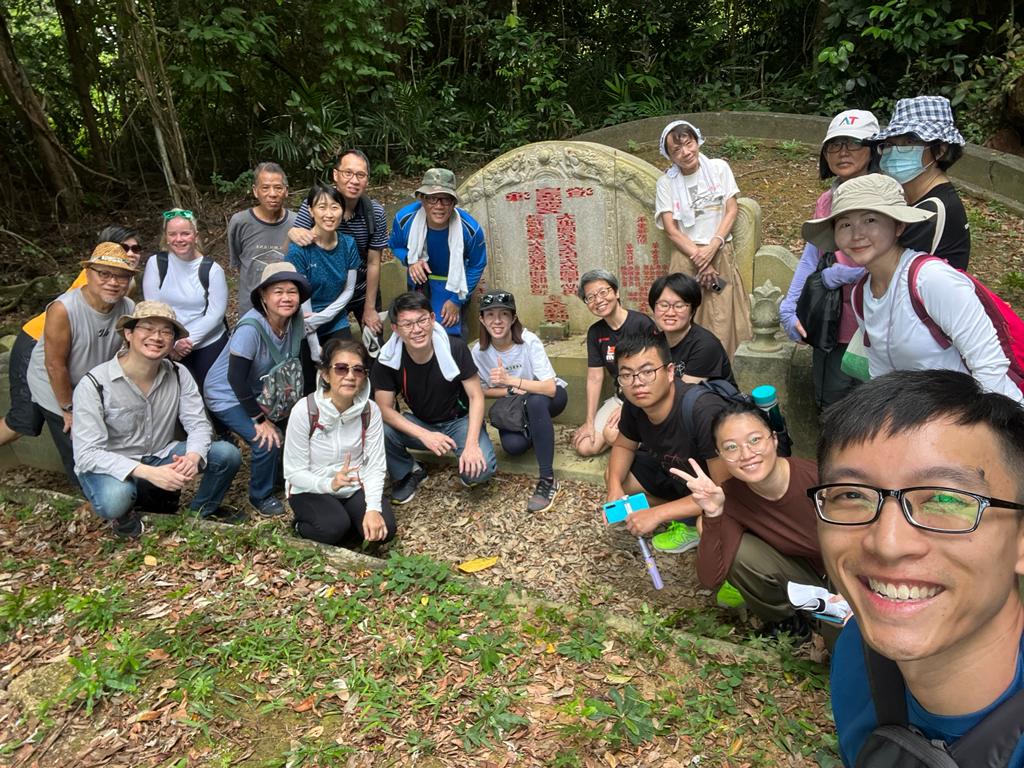
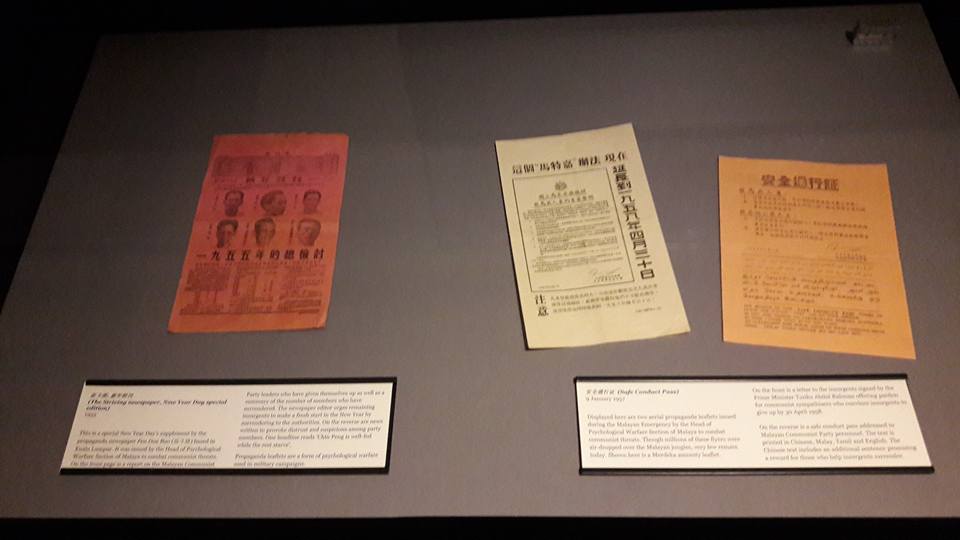


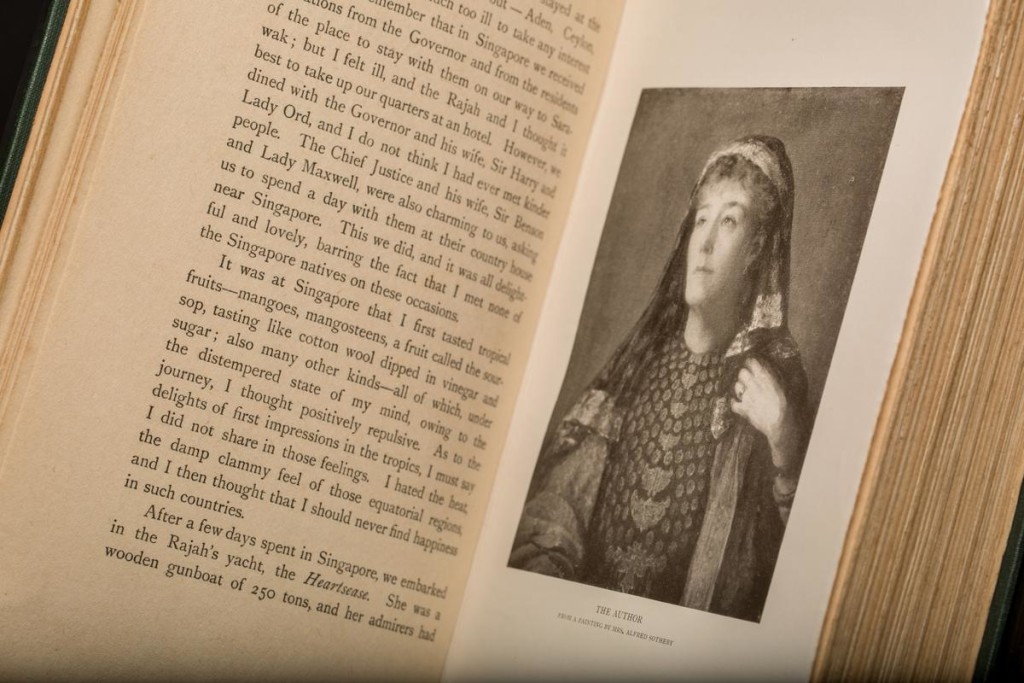

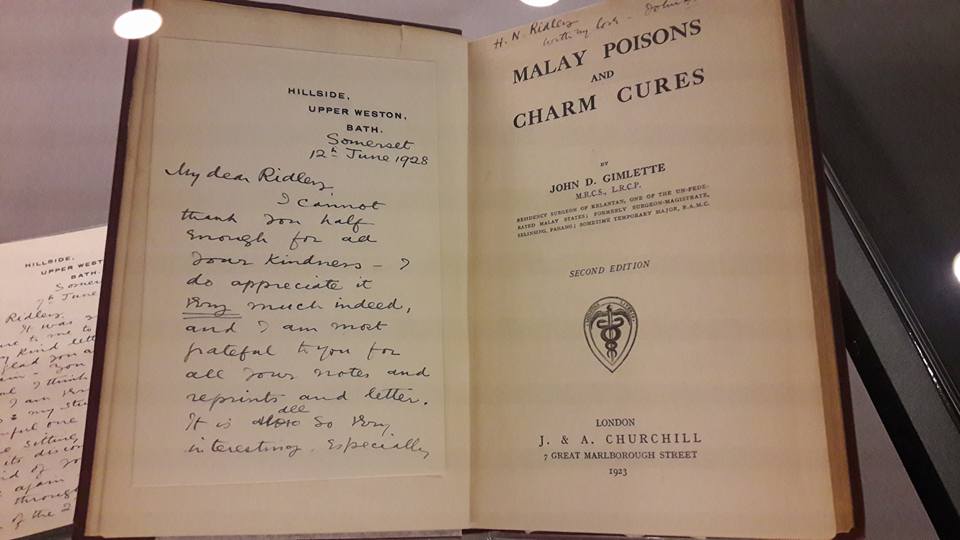
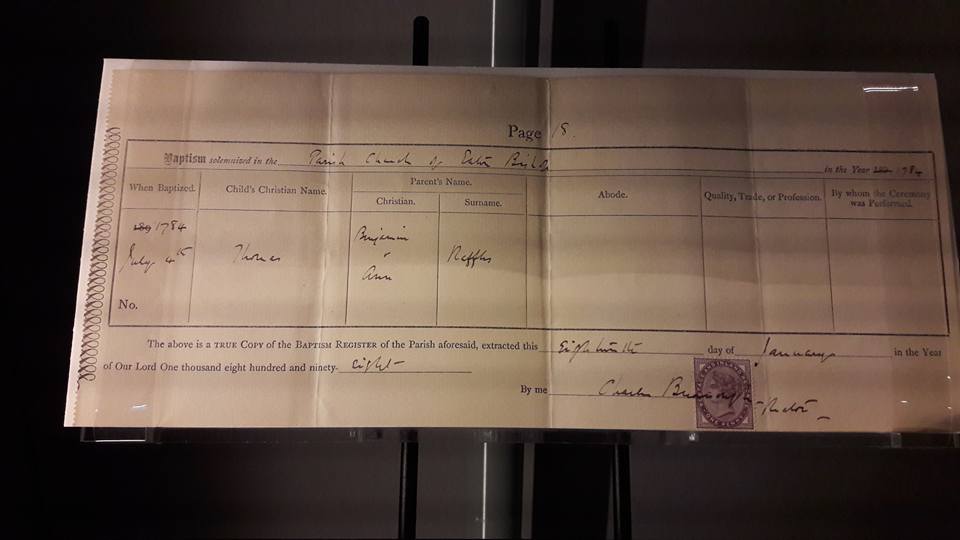
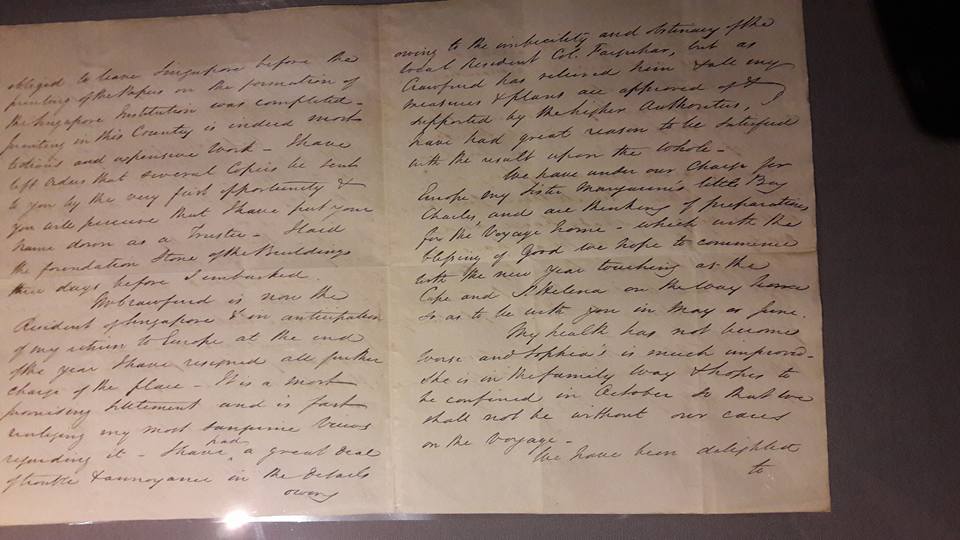



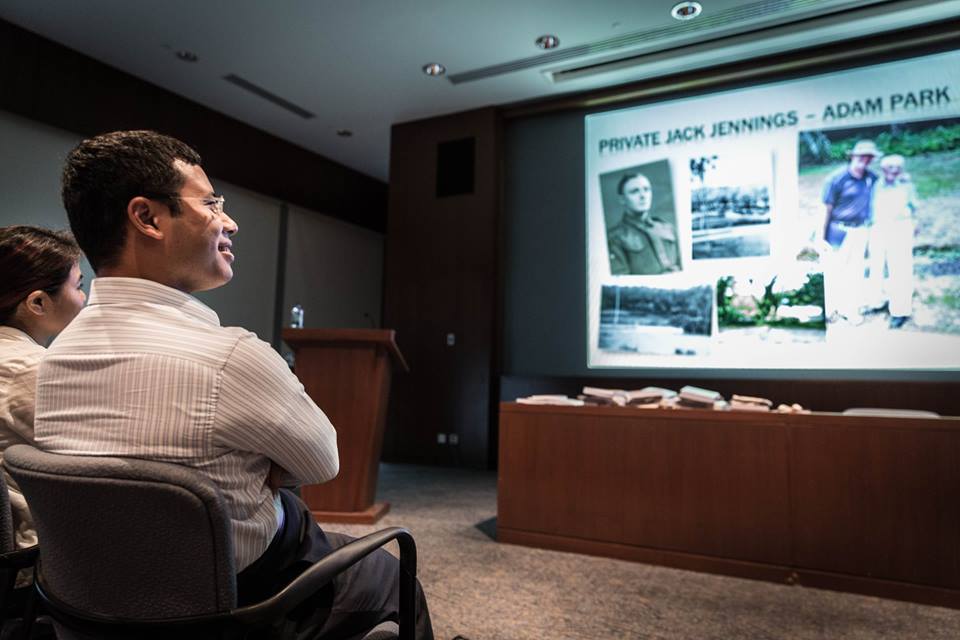

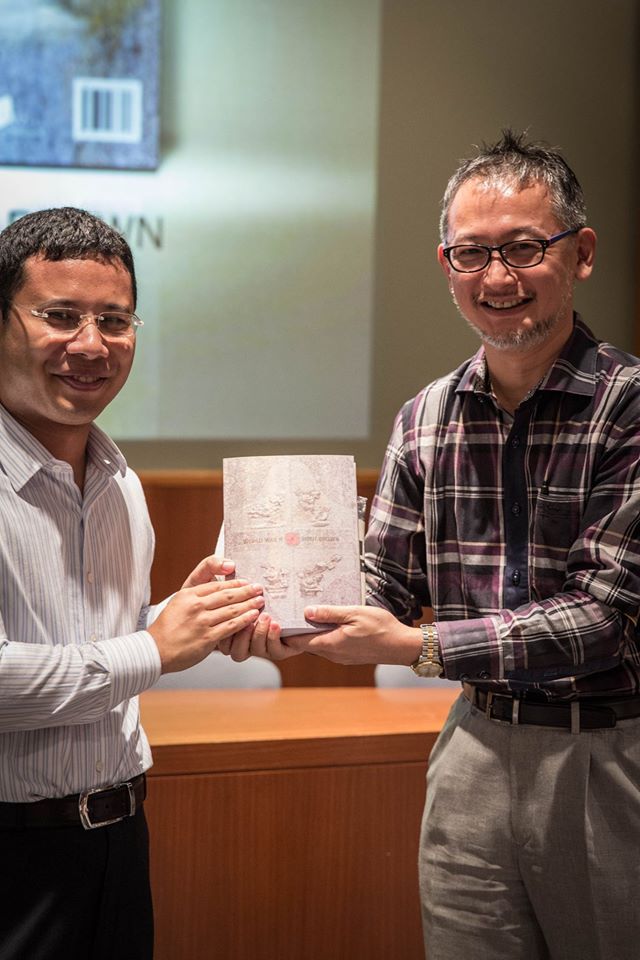

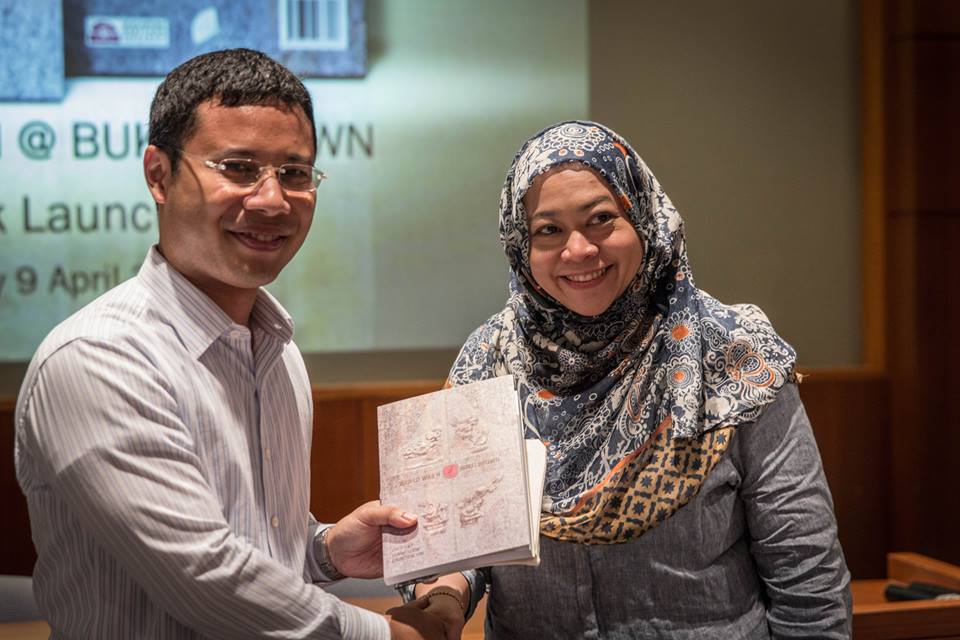

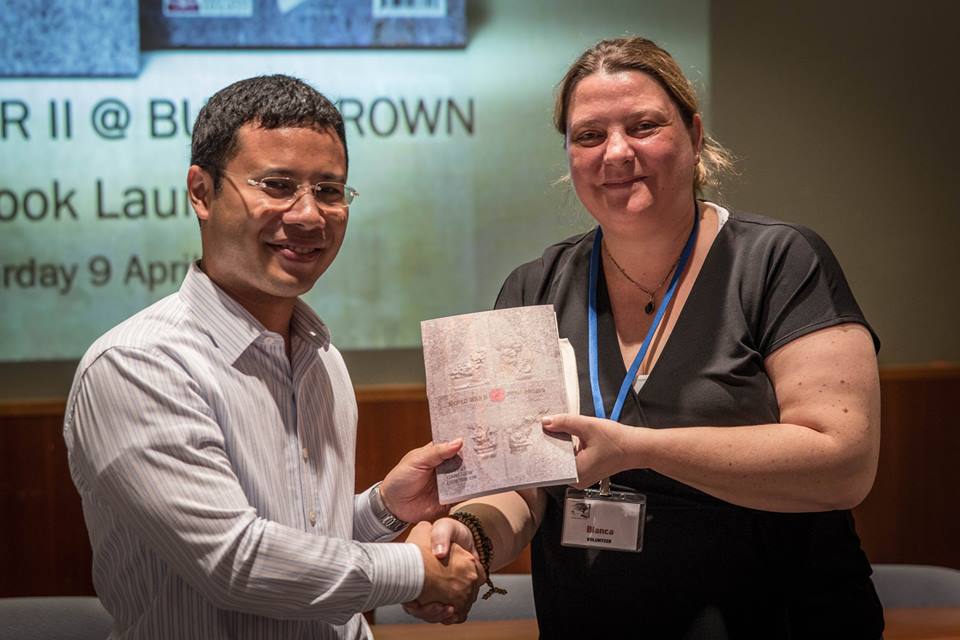
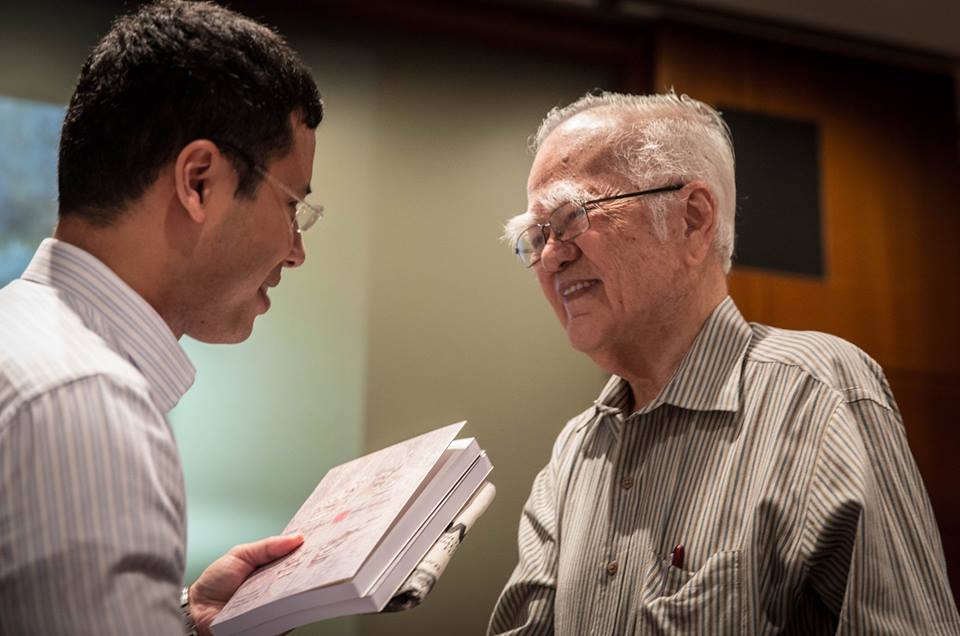


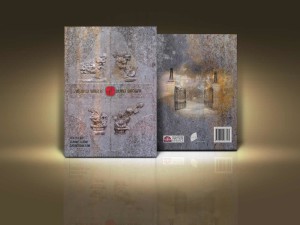
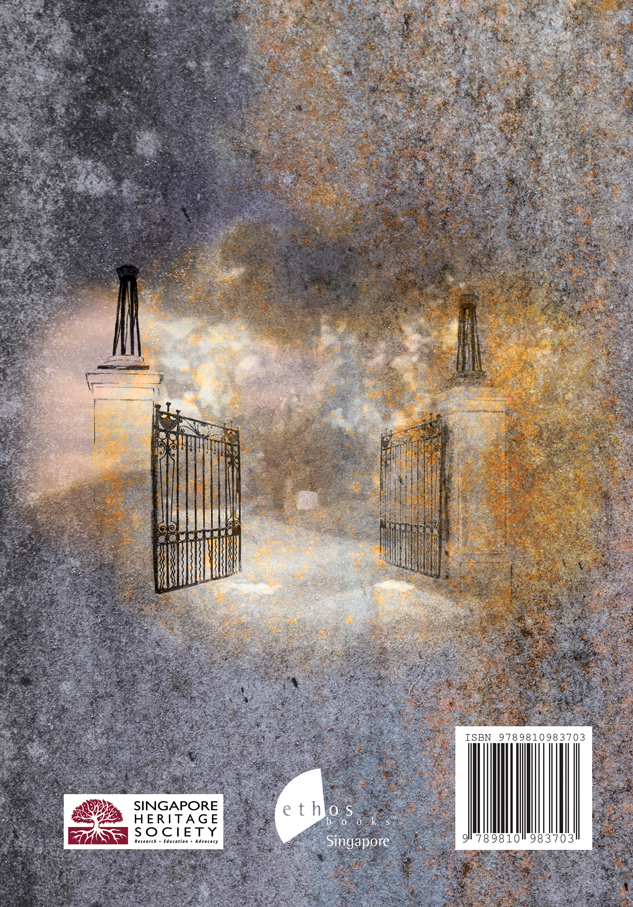

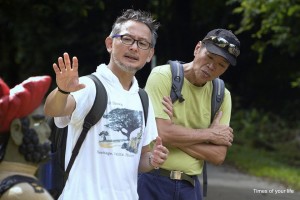
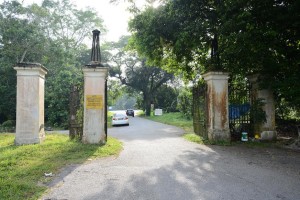
Recent Comments